Chemistry and Chemists № 3 2023
Journal of Chemists-Enthusiasts
| Content | Chemistry experiments - video | Physics experiments - video | Home Page - Chemistry and Chemists |
|
Chemistry and Chemists № 3 2023 Journal of Chemists-Enthusiasts |
Flowers change colour: effect of alkalis and acids on plant dyes - pt.15 V.M. Viter |
|
Having noticed a mistake in the text, allocate it and press Ctrl-Enter
Sambucus ebulus (Danewort) and ammonia - pt.15
On the way to work, I came across thickets of bushes with white flowers and black berries. I have known this plant since childhood, but until now, I have not wondered what this species' name is. It turned out that this inconspicuous plant has a lot of fascinating things. A colleague said the plant is called Sambucus ebulus (the plant is also known as Danewort). This perennial herbaceous plant belongs to the genus of Sambucus (Elder). The plant is medicinal and, at the same time, poisonous. What causes its toxic properties? The colleague wrote: "Sambucus ebulus. Its medicinal properties are similar to Sambucus nigra (Elderberry). However, using flowers, unripe berries, and leaves of this plant may lead to poisoning with amygdalin. This glycoside releases hydrocyanic acid during enzymatic degradation in the body". 
Amygdalin When I started looking for information, it turned out that the chemical composition of Sambucus ebulus is unknown (not studied). But it is assumed that the composition of this plant is similar to Sambucus nigra (Elderberry). In turn, Sambucus nigra contains the cyanogenic glycoside sambunigrin. 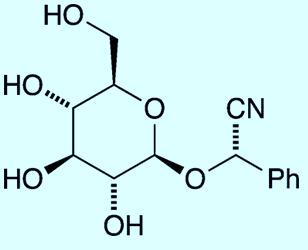
Sambunigrin I did not find information that Sambucus nigra contains amygdalin. Probably, the statement (by my college and Wikipedia) that Sambucus ebulus contains this glycoside was not checked out by chemical analysis (a hypothetical suggestion). Sambunigrin and amygdalin are related chemical compounds but not identical. However, the cyanogenic glycoside sambunigrin (and related compounds) also produces hydrogen cyanide upon enzymatic degradation, which can lead to poisoning. Let me quote: "Sambunigrin, also referred to as (S)-prunasin, is a cyanogenic glycoside that is produced in the leaves and other parts of the elderberry plant (Sambucus nigra). Upon enzymatic degradation, as much as 126 mg of hydrogen cyanide (HCN) is produced from 1 kg of fresh leaves. The good news about S. nigra is that its flowers and ripe berries do not contain sambunigrin." https://www.acs.org/molecule-of-the-week/archive/s/sambunigrin.html Thus, the flowers and ripe berries of Sambucus nigra do not contain sambunigrin. Therefore, they are relatively safe (unlike the unripe fruits and leaves). It is not surprising that the fruits of Sambucus nigra are used as raw materials for the preparation of various food products (the fruits are NOT consumed directly): "The fruits have a characteristic sweet-sour taste and a peculiar aroma. They are not edible fresh. But those collected at the stage of full ripeness are used for technical processing (production of wines, liqueurs, preserves, jellies, mousses, tea and coffee substitutes, alcohol, and fillings for sweets and pies). Red wines are coloured with condensed juice. Elderberry fruits should be mixed with other wild and cultivated fruits when making food products." I remember a friend used the juice of Sambucus nigra berries as a medicine (to lower blood pressure). This is a risky idea. Among the ripe fruits, there could be some unripe ones. Let us return to Sambucus ebulus; for the sake of brevity, we will call it "danewort". I do not know whether its ripe berries are edible. On the way home, I will try to eat some danewort berries (if this article is finished and published, it will mean the author is still alive [1]). In any case, danewort berries contain bright pigment (pigments). Therefore, they are well suited for our experiments. First, I collected danewort berries and squeezed the juice out of them (squeezing the fruits between two plastic glasses). The liquid was black and left bright-coloured spots on the skin and other surfaces. The purpose of the experiment is to determine how the colour of the pigment (pigments) of the juice changes in alkaline and acidic mediums. I used ammonia to start with. I poured 100 ml of distilled water into a glass and began to add danewort juice drop by drop. When the juice (with pieces of pulp) fell into the water, the coloured drops sank to the bottom, forming vortex rings. Danewort juice resembled potassium permanganate! Nostalgia!!! The liquid was mixed. The result was a raspberry solution (however, the colour was slightly different from the colour of the permanganate solution). Moreover, particles of pulp from the juice, sinking to the bottom, resembled potassium permanganate crystals! I often used potassium permanganate in my childhood for chemical experiments. This reagent was readily available then, but now potassium permanganate is unreasonably banned. The colour of the solution reminded a colleague of the medicine "Carbol fuchsin" (Latin - Fucorcinum), a liquid with antiseptic and antifungal effects tinted with fuchsin. 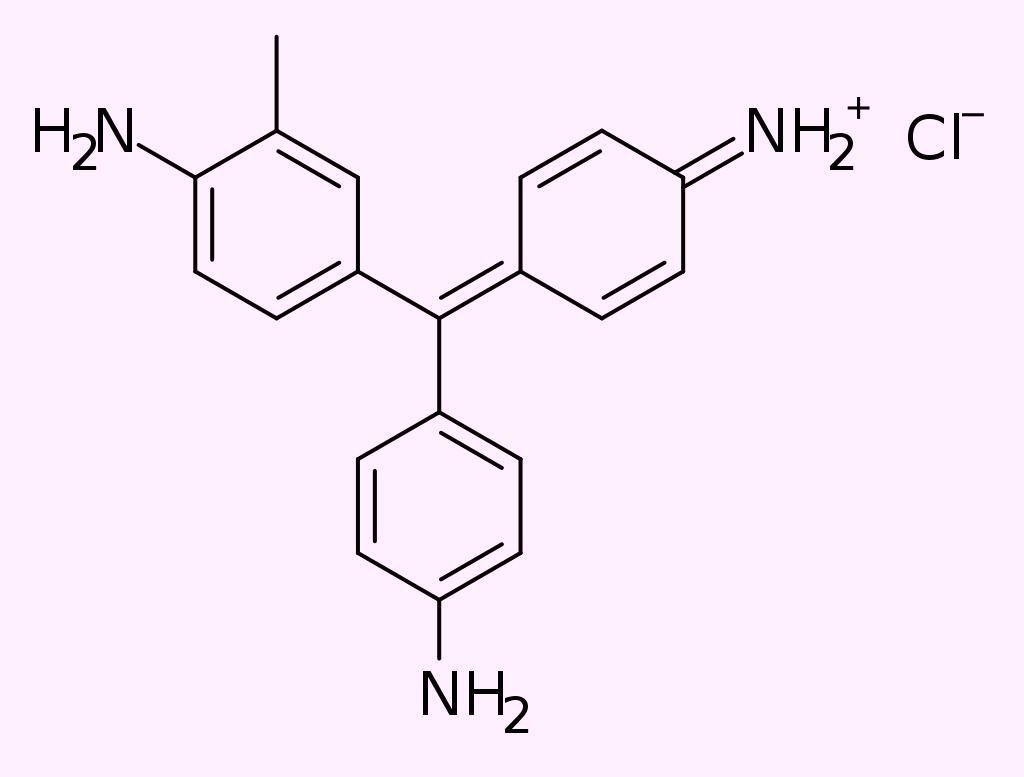
Fuchsine (rosaniline hydrochloride) 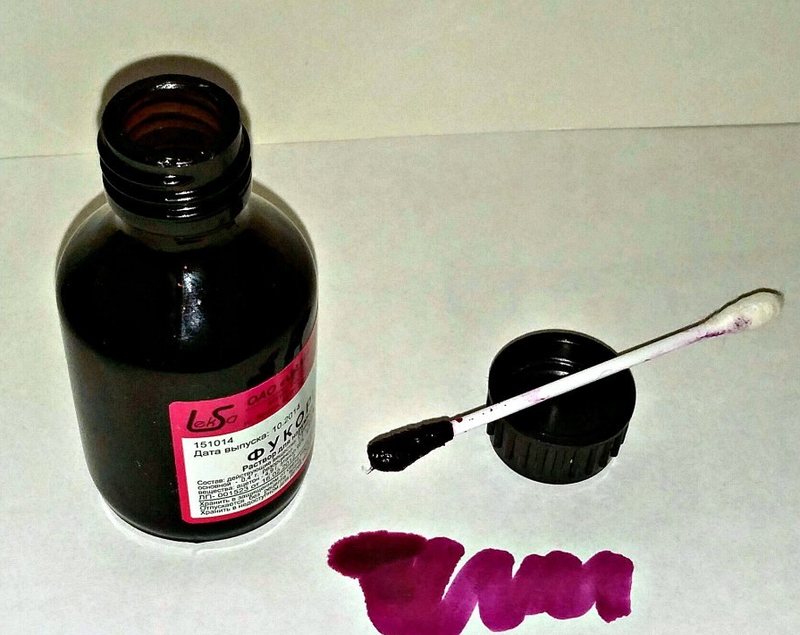


Carbol fuchsin As a result of adding danewort juice to water, an intense crimson, transparent solution was formed. I added concentrated ammonia drop by drop. The liquid was mixed. The solution became black and almost non-transparent. I diluted the solution with distilled water, and it became apparent that the colour of the solution was blue. The experiment was a success, but the video turned out to be of poor quality because I added too much danewort juice to distilled water (at first, everything was fine, but then, after adding ammonia, the colour of the solution was too intense). I decided to repeat the experiment. I washed the glass and poured a new portion of distilled water (100 ml) into it. I added one drop of danewort juice and stirred the solution with a glass rod. The liquid turned not raspberry but lilac! Why? Then, I added an ammonia solution - the solution turned blue. What was the matter - I understood immediately. I didn't wash the glass rod after the previous experiment (I forgot). A small amount of ammonia remains on its surface. Therefore, the water in the glass became alkaline, so the vegetable dye colour became lilac, not crimson. It is obvious! Even small amounts of strong acids or alkalis change the pH of distilled water considerably. The ammonia solution is not a strong alkali, but it was enough. In a physical chemistry lesson, I remember we were asked to calculate: "How the pH changes if we add just one drop of concentrated sulfuric acid in a barrel with 200 litres of distilled water". Try it - the result may surprise you. I had to redo the experiment a third time. I took 100 ml of distilled water and added two drops of danewort juice, stirred the solution. The colour was crimson. Then, I added a concentrated ammonia solution drop by drop to the liquid and mixed it again. The raspberry solution turned blue. __________________________________________________ 1 There were no consequences after eating the berries, but I was punished - the berries turned out to have a bad taste. |
|
Sambucus ebulus (Бузина травянистая) и аммиак - ч.15
По дороге на работу встретил заросли кустов с белыми цветами и черными ягодами. Я знаю это растение с девства, но только сейчас поинтересовался: "Как называется данный биологический вид?". Оказалось, поинтересовался не зря: в этом неприметном растении есть много интересного. Коллега подсказал, что растение называется Sambucus ebulus (Бузина травянистая/вонючая). Многолетнее травянистое растение, представитель рода Sambucus (Бузина). Лекарственное и в то же время - ядовитое. Чем обусловлены его ядовитые свойства? Коллега написал: "Sambucus ebulus / Бузина травянистая. По лекарственным свойствам аналогична Sambucus nigra (Бузине черной), однако при использовании цветков, незрелых ягод, листьев, можно отравиться амигдалином (гликозид, который при расщеплении в организме выделяет синильную кислоту)." 
Amygdalin Когда стал искать информацию, оказалось, что химический состав Sambucus ebulus / Бузины травянистой неизвестен (не исследован), но предполагается, что он аналогичен Sambucus nigra (Бузине черной). Последняя, в свою очередь, содержит цианогенный гликозид самбунигрин (sambunigrin). 
Sambunigrin Информацию, что Sambucus nigra / Бузина черная содержит амигдалин я не нашел. Видимо утверждение (моего коллеги, а также - Википедии), что Sambucus ebulus / Бузина травянистая содержит данный гликозид, не было проверено химическим анализом (гипотетическое предположение). Самбунигрин и амигдалин являются родственными химическими соединениями, но они не идентичны по строению. Плохая новость в том, что цианогенный гликозид самбунигрин (как и другие их аналоги) также образует цианистый водород при ферментативном расщеплении, что может привести к отравлению. Приведу цитату: "Самбунигрин, также называемый (S)-пруназин, представляет собой цианогенный гликозид, который вырабатывается в листьях и других частях растения Sambucus nigra (Бузина черная). При ферментативном разложении из 1 кг свежих листьев образуется до 126 мг цианистого водорода (HCN). Хорошая новость заключается в том, что цветы и спелые ягоды Sambucus nigra не содержат самбунигрин." https://www.acs.org/molecule-of-the-week/archive/s/sambunigrin.html Таким образом, цветы и спелые ягоды Sambucus nigra / Бузины черной не содержат самбунигрин. Следовательно, они сравнительно безопасны (в отличие от незрелых плодов и листьев). Не удивительно, что плоды Sambucus nigra / Бузины черной используют как сырье для приготовления разных пищевых продуктов (непосредственно в пищу плоды НЕ употребляют): "Плоды обладают характерным сладко-кислым вкусом и своеобразным ароматом. В свежем виде они не съедобны. Но собранные в стадии полной спелости используются для технической переработки (производство вин, наливок, ликеров, варенья, желе, муссов, киселей, чайно-кофейных суррогатов, спирта, начинок для конфет и пирогов). Сгущенным соком подкрашивают красные вина. Для приготовления пищевых продуктов плоды бузины лучше смешивать с другими дикорастущими и культурными плодами." Помню, знакомая употребляла сок плодов Sambucus nigra / Бузины черной в качестве лекарства (для понижения давления). Рискованное занятие: среди плодов, из которых она делала сок, могли оказаться и не совсем спелые. Вернемся к Sambucus ebulus / Бузине травянистой, дальше для краткости будем называть ее просто "бузина". Съедобны ли ее спелые ягоды - не знаю. По дороге домой - попробую (если эта статья будет окончена и опубликована - значит, автор остался жив [1]). В любом случае, ягоды бузины содержат яркий пигмент (пигменты), поэтому хорошо подходят для наших экспериментов. Для начала собрал ягоды бузины и выдавил из них сок (сжал ягоды между двумя пластиковыми стаканами). Сок имел черный цвет, на коже и других поверхностях он оставлял яркие пятна. Цель эксперимента - установить, как изменится цвет пигмента (пигментов) сока в щелочной и кислой средах. Для начала использовал аммиак. Налил в стакан 100 мл дистиллированной воды и стал по каплям добавлять сок бузины. Когда сок с частичками мякоти попал в воду, капли стали опускаться на дно, образуя вихревые кольца. Сок бузины напоминал перманганат калия! Ностальгия!!! Жидкость перемешал. Получился малиновый раствор (оттенок, правда, отличался от перманганата). Более того, частички мякоти из сока, опускаясь на дно, напоминали кристаллы перманганата калия! Перманганат калия я часто использовал в детстве для химических экспериментов. Тогда этот реактив был легко доступен, сейчас перманганат калия фактически запретили (безо всяких реальных оснований). Коллеге цвет раствора напомнил медицинский препарат "краска Кастеллани" (лат. fucorcinum), жидкость с антисептическим и противогрибковым действием, которую подкрашивают фуксином. 
Fuchsine (rosaniline hydrochloride) В результате добавления сока бузины в воду образовался интенсивно-малиновый, прозрачный раствор. Добавил по каплям концентрированный аммиак. Перемешал. Раствор стал черным и почти непрозрачным. Разбавил раствор дистиллированной водой, стало видно, что цвет раствора - синий. Эксперимент удался, но видео получилось не совсем качественным, поскольку я добавил слишком много сока бузины в дистиллированную воду (сначала все было нормально, но потом - после прибавления аммиака окраска раствора была слишком интенсивной). Решил повторить опыт. Помыл стакан, налил в него новую порцию дистиллированной воды (100 мл). Добавил одну каплю сока бузины. Перемешал стеклянной палочкой, раствор стал не малиновым, а сиреневым! Почему? Потом добавил раствор аммиака - раствор стал синим. В чем дело - я понял сразу. Стеклянную палочку после предыдущего опыта я не помыл (забыл). На ее поверхности осталось небольшое количество аммиака. Поэтому вода в стакане стала щелочной, следовательно, цвет растительного красителя стал сиреневым, а не малиновым. А вы как думали? Даже небольшие количества сильных кислот или щелочей меняют рН дистиллированной воды очень сильно. Раствор аммиака сильной щелочью не является, но и его хватило. Помню, на занятиях по физической химии нам предложили рассчитать, как измениться рН в бочке с 200 л дистиллированной воды, если добавить в нее всего 1 каплю концентрированной серной кислоты. Попробуйте - результат может вас удивить. Пришлось переделывать эксперимент третий раз. Я взял 100 мл дистиллированной воды, добавил 2 капли сока бузины. Перемешал. Цвет был малиновый. Потом по каплям добавил концентрированный раствор аммиака, опять перемешал. Малиновый раствор стал синим. __________________________________________________ 1 Употребление ягод в пищу обошлось без последствий, но я был наказан - ягоды оказались невкусными. |
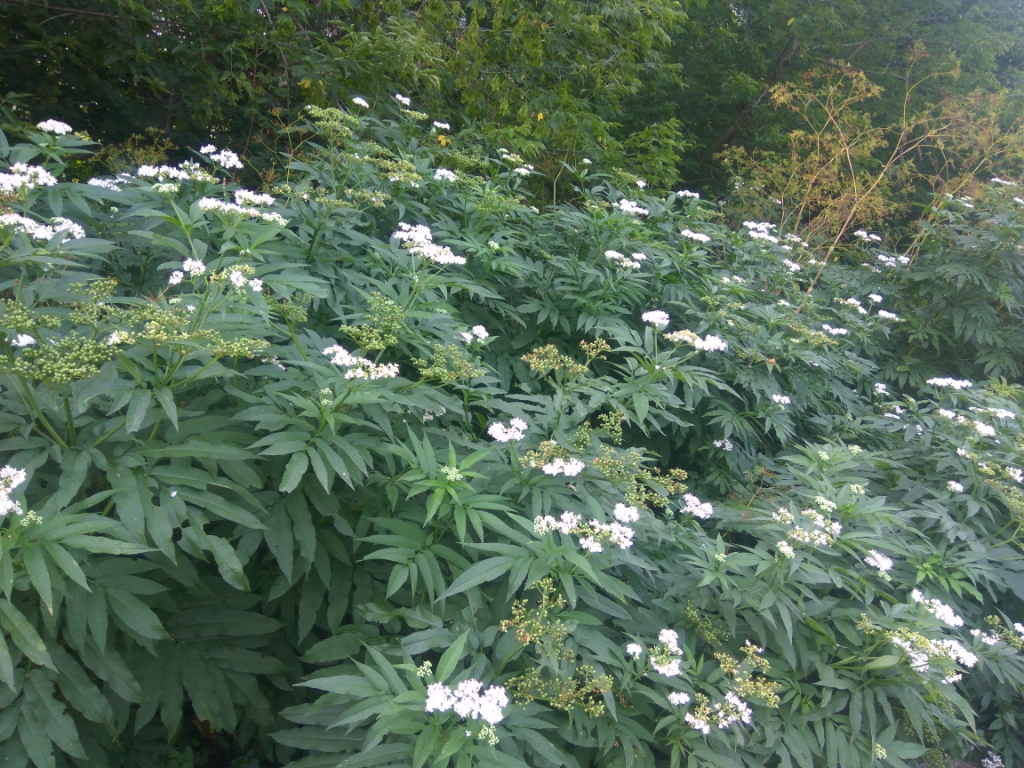
Sambucus ebulus (Danewort) |

|
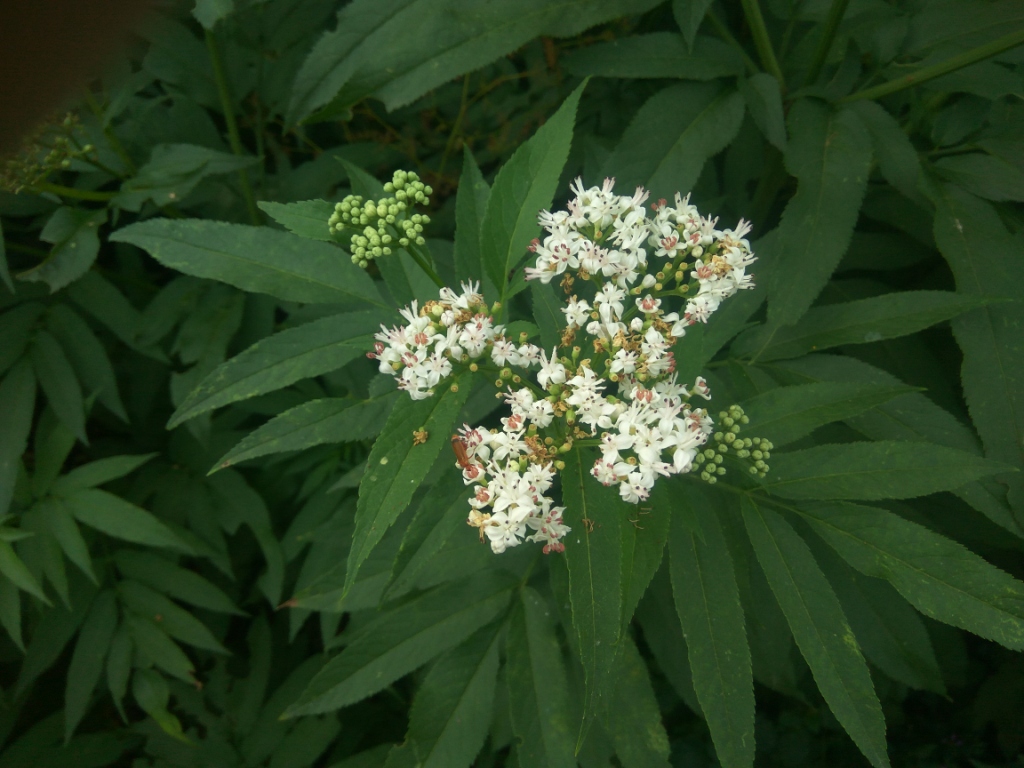
|
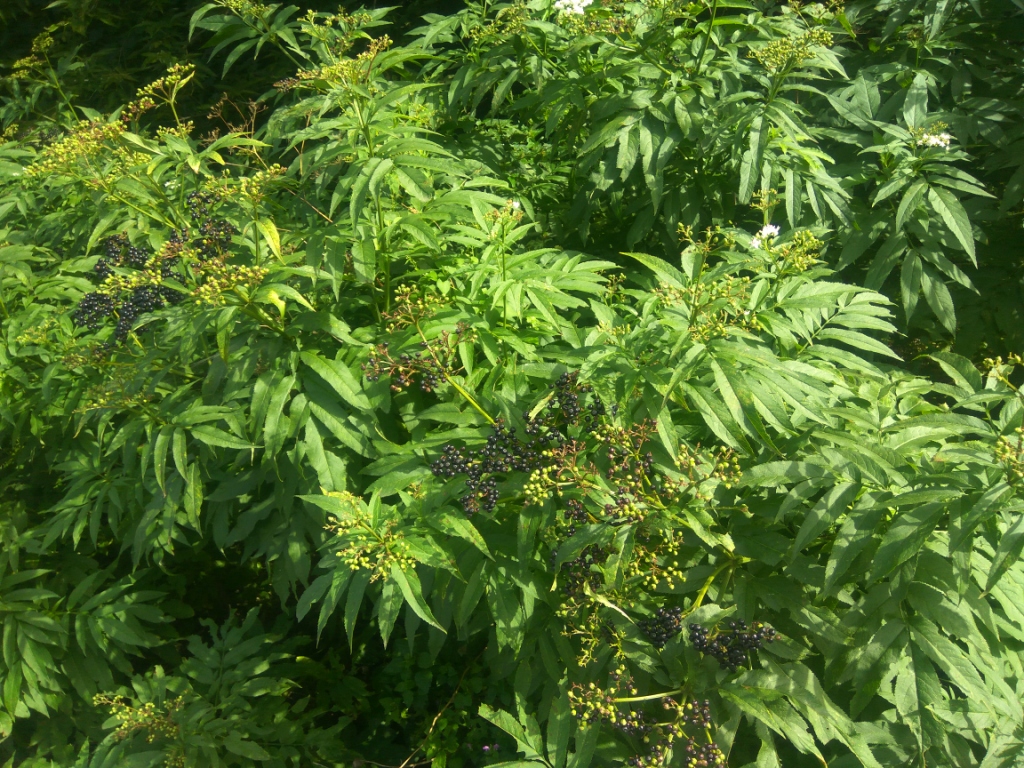
|
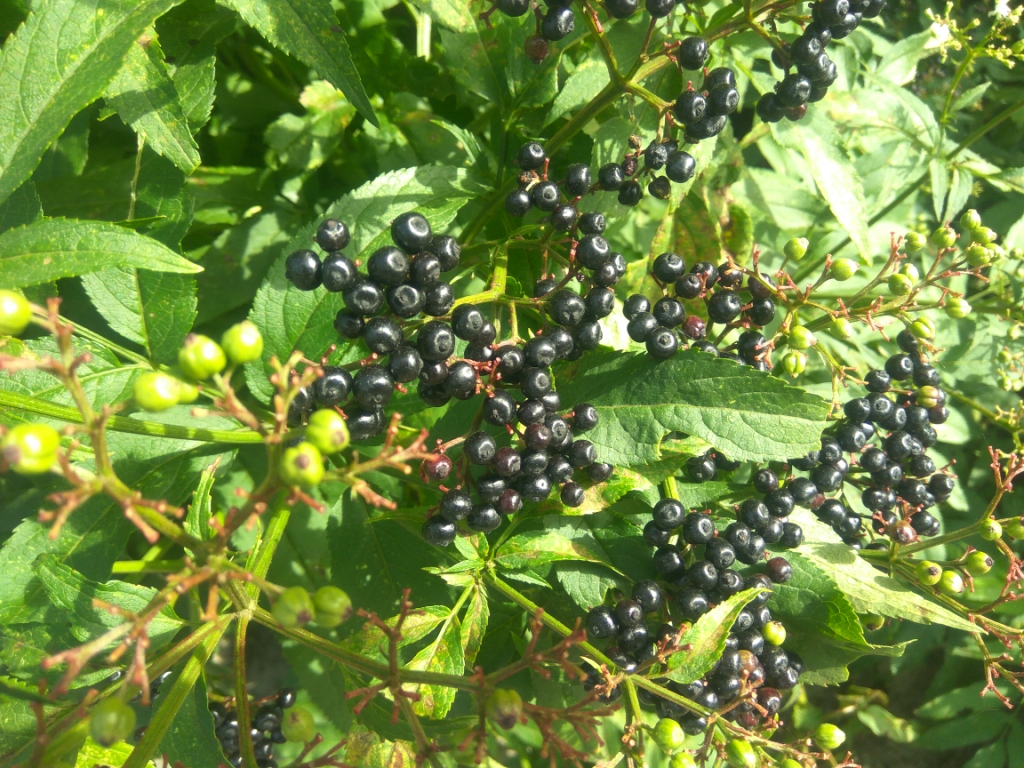
|

|
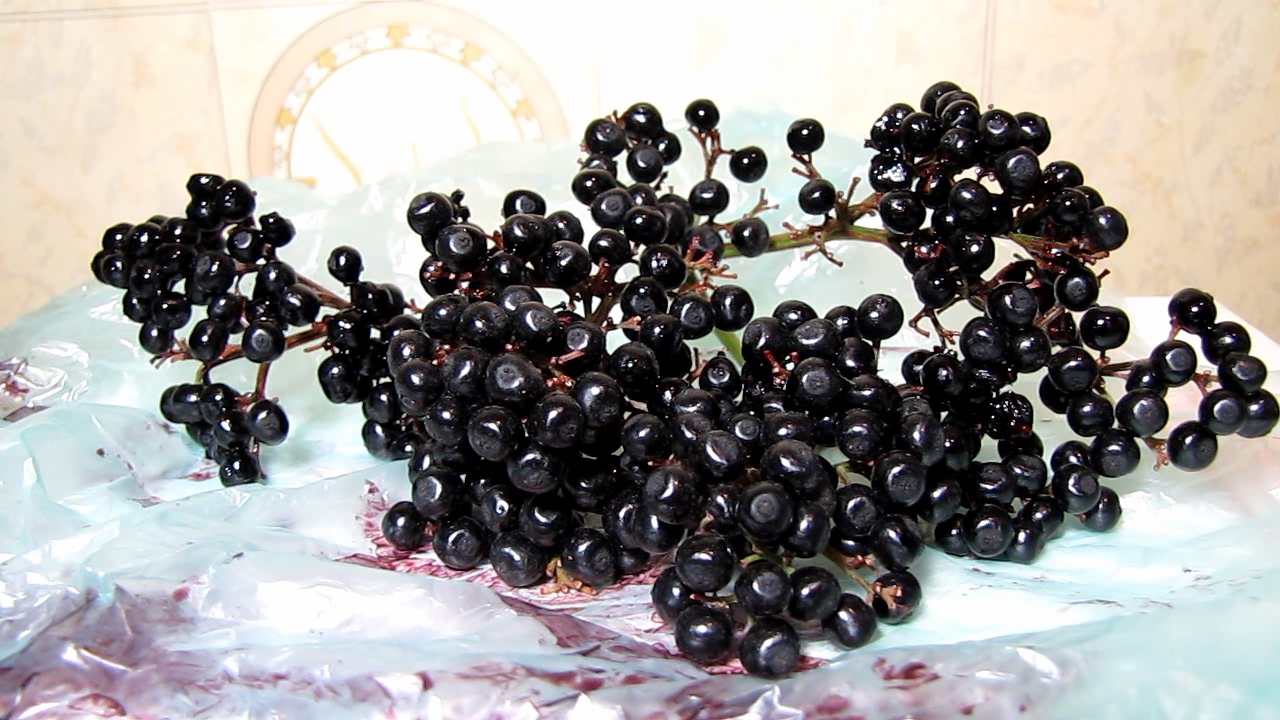
Sambucus ebulus (Danewort) and ammonia |

|
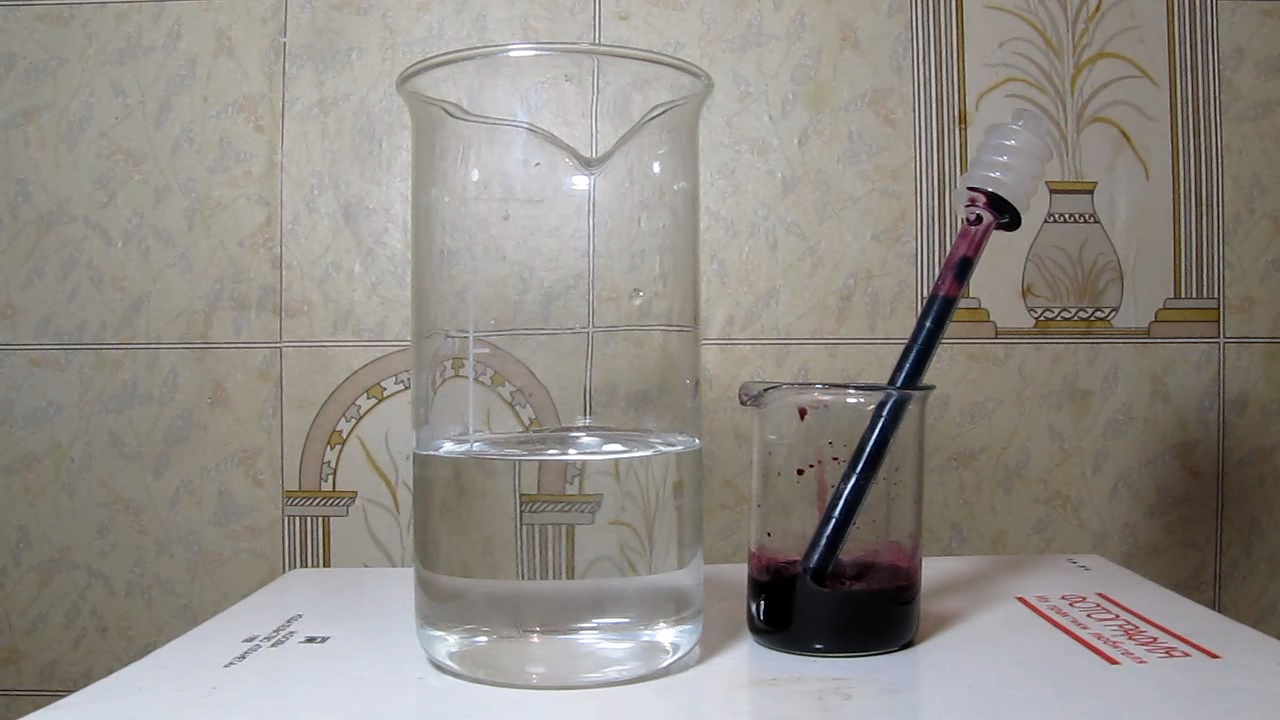
|
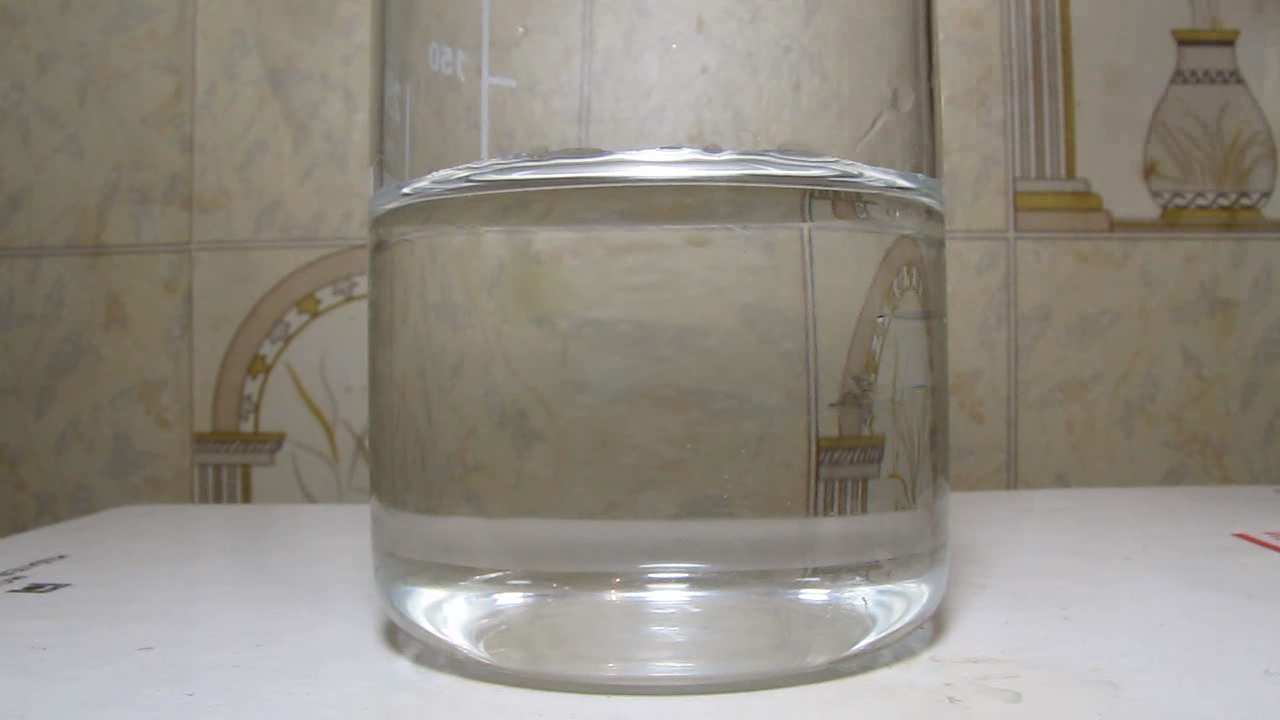
|
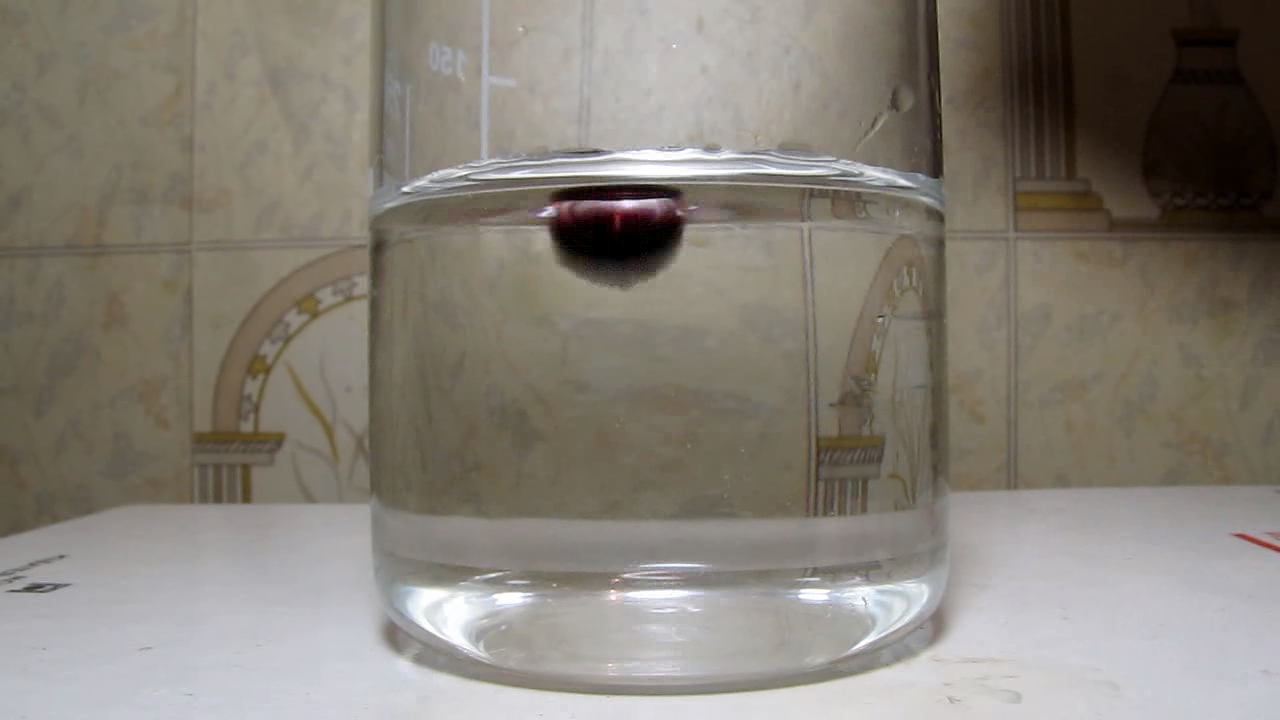
|

|
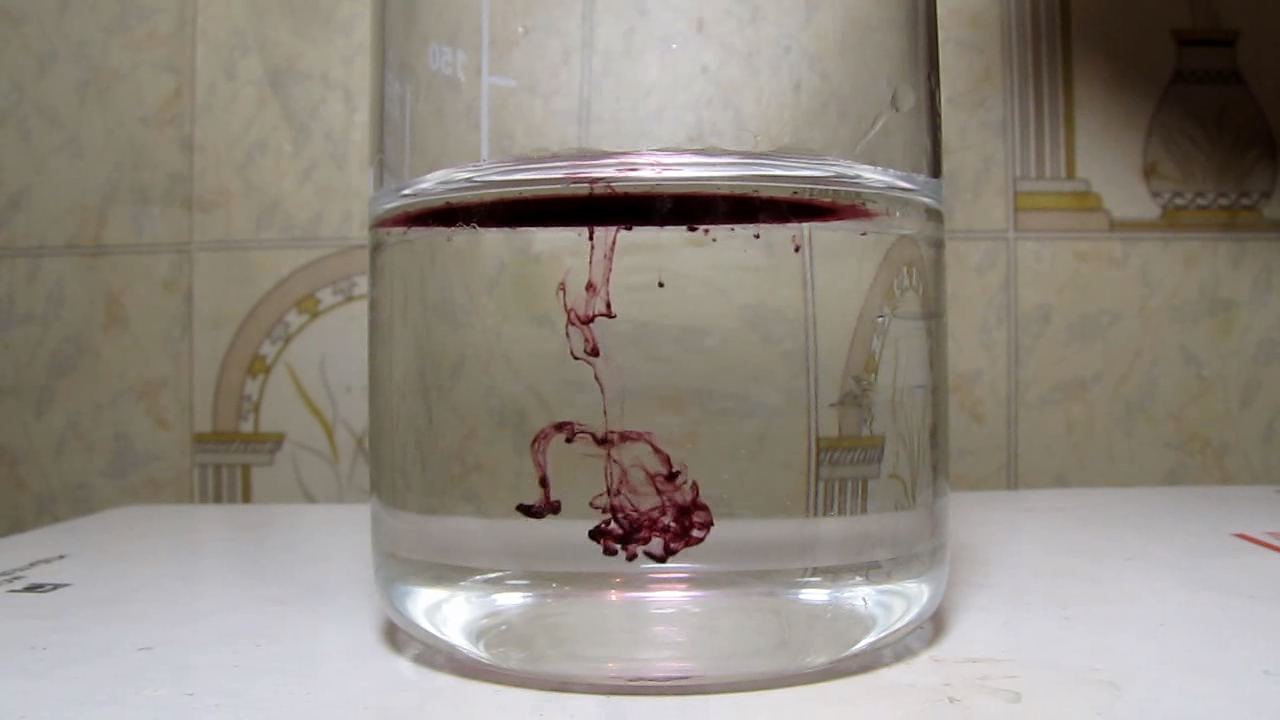
|

|

|
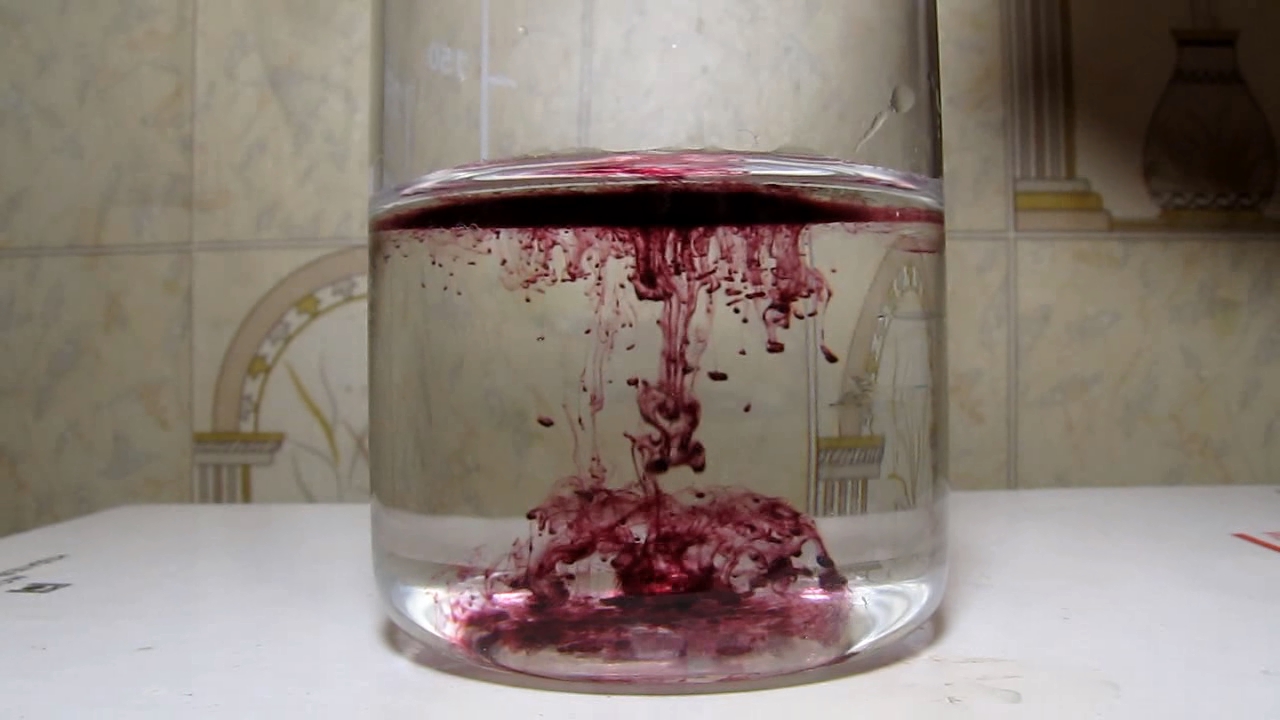
|
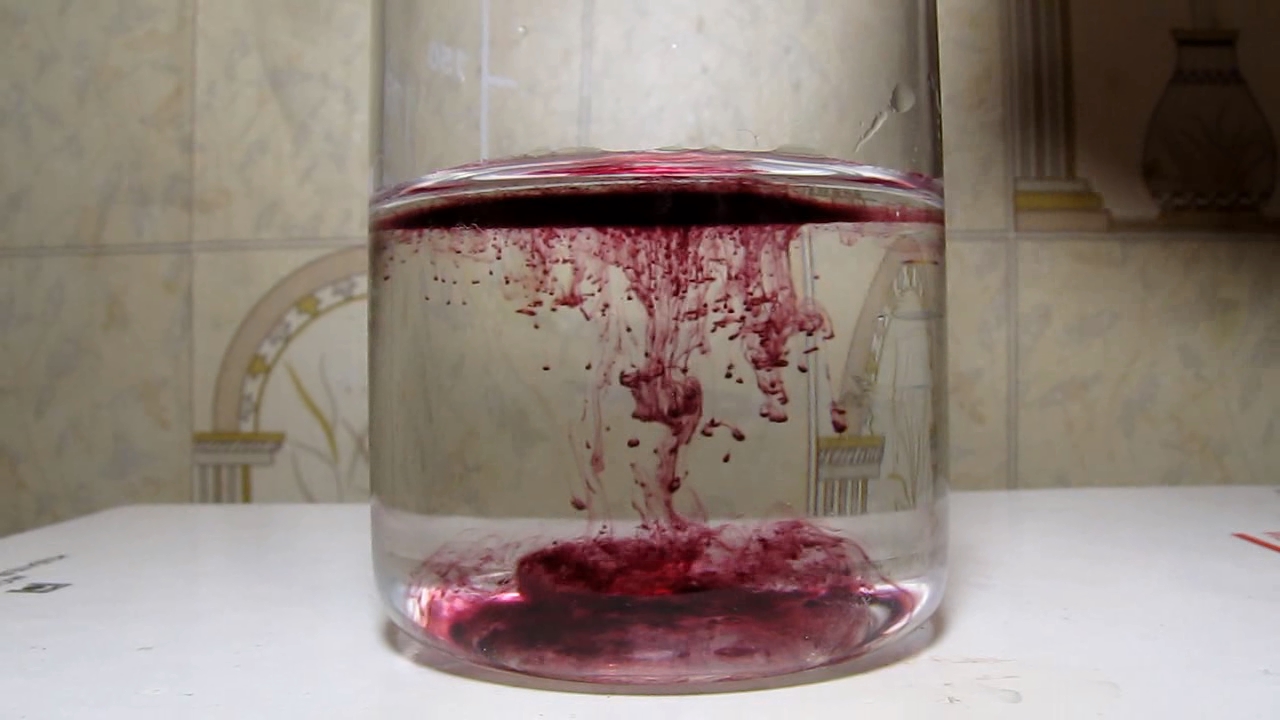
|

|

|
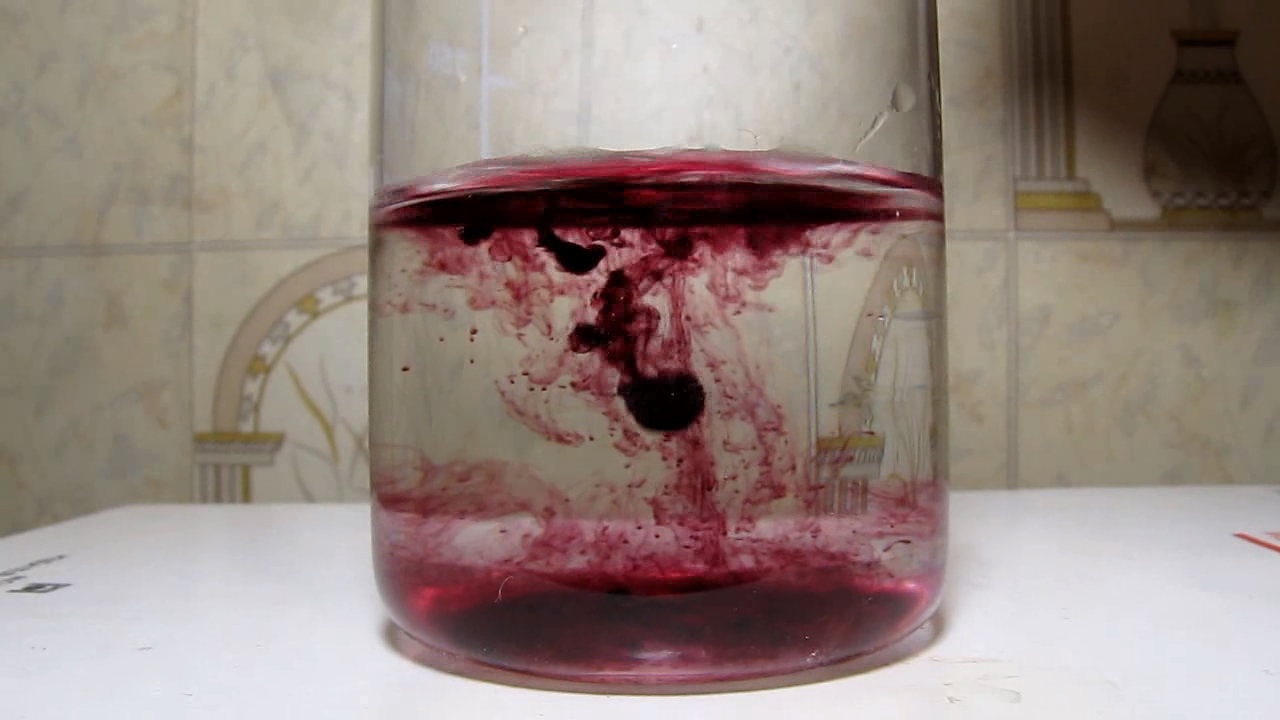
|
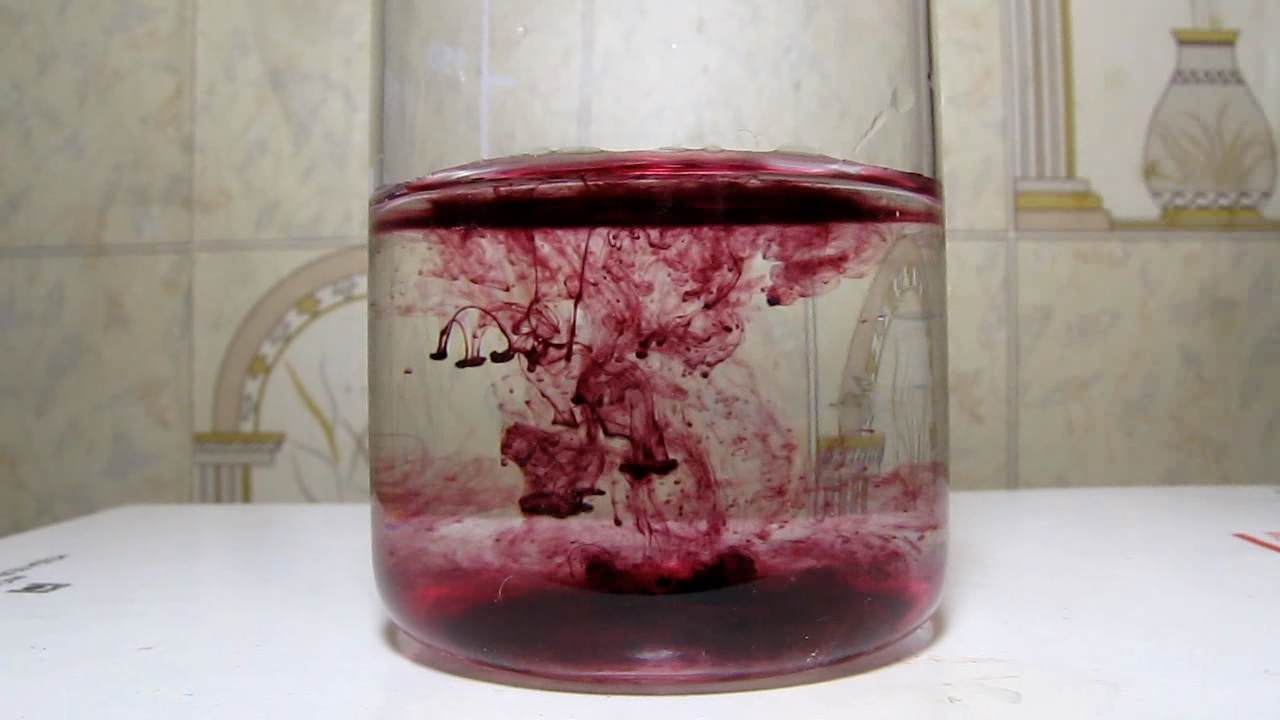
|

|
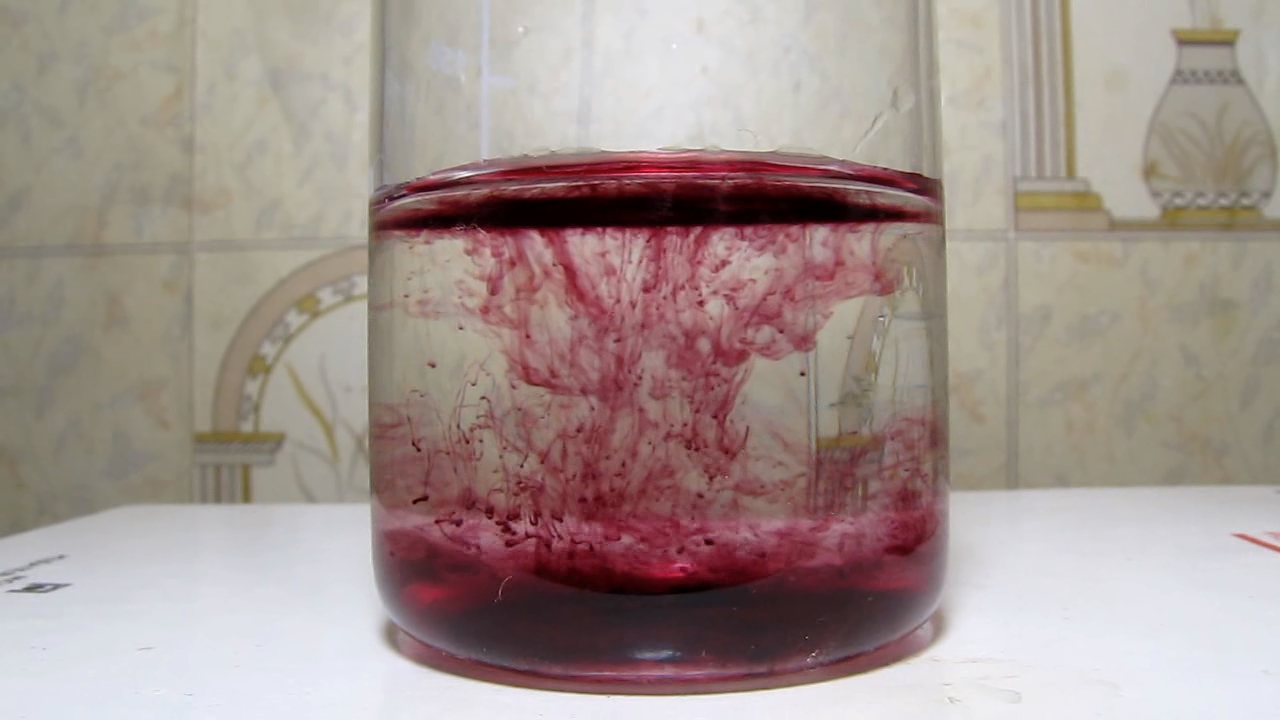
|
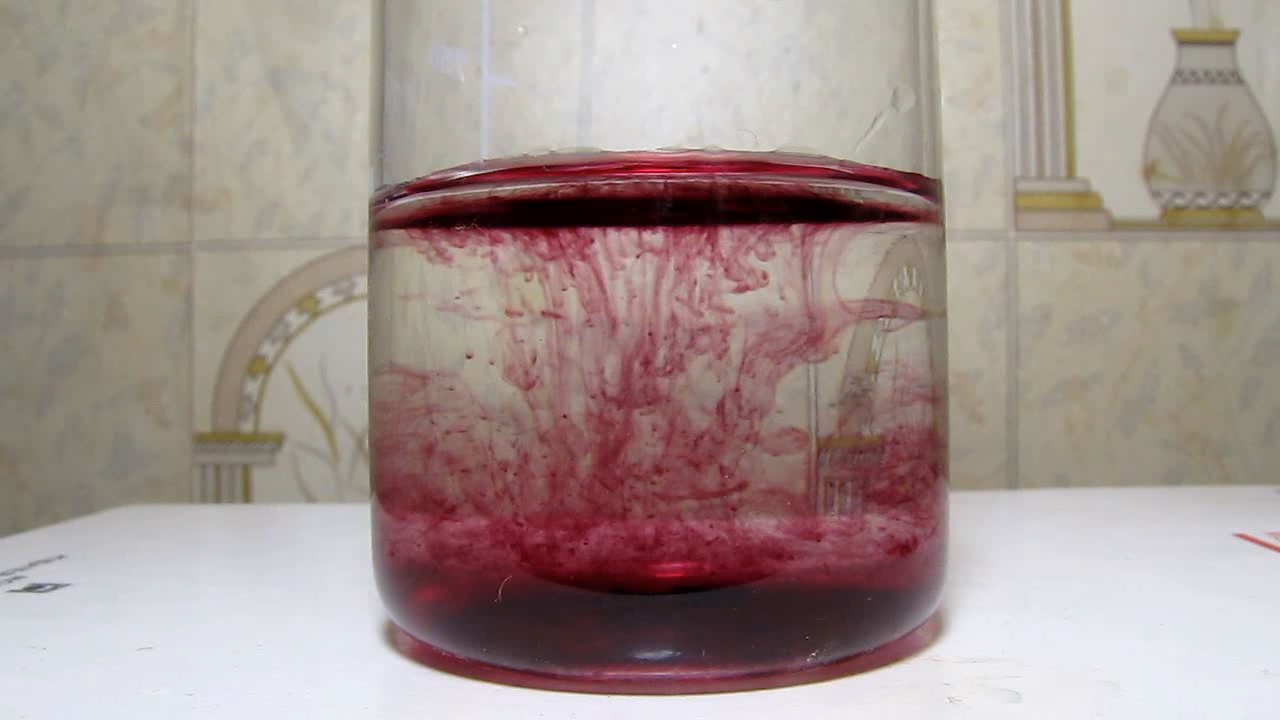
|

|

|
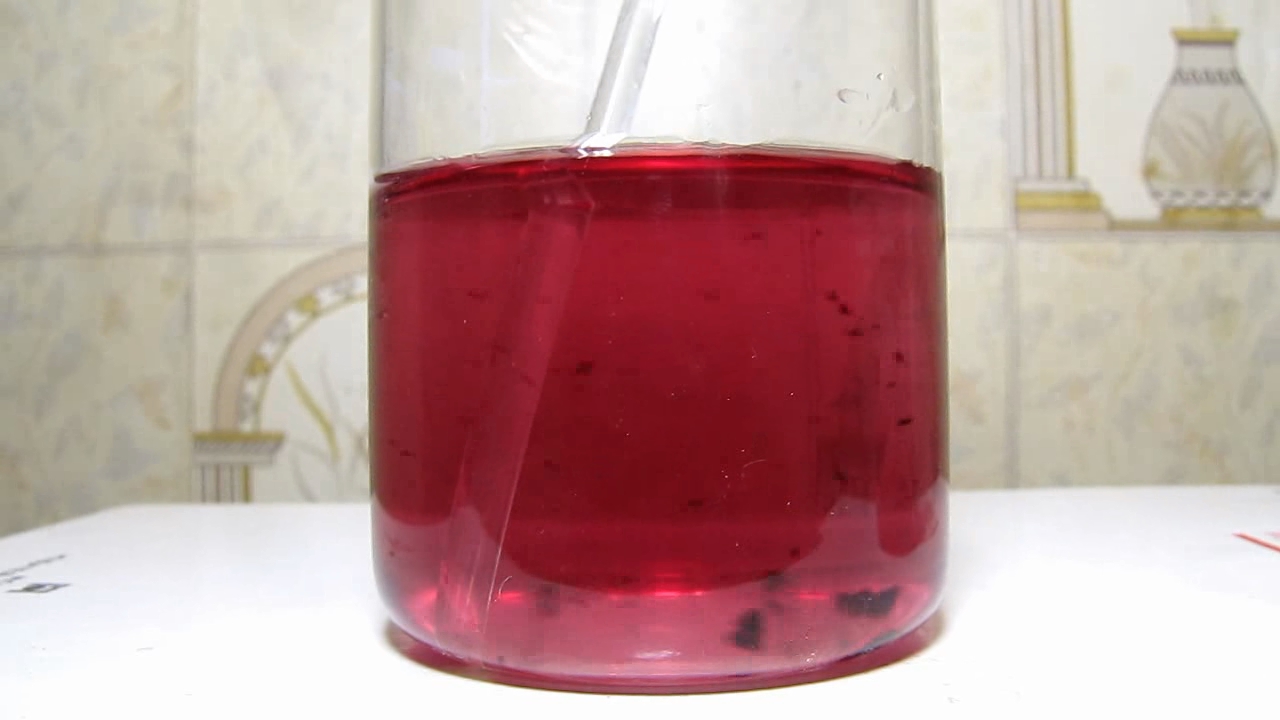
|
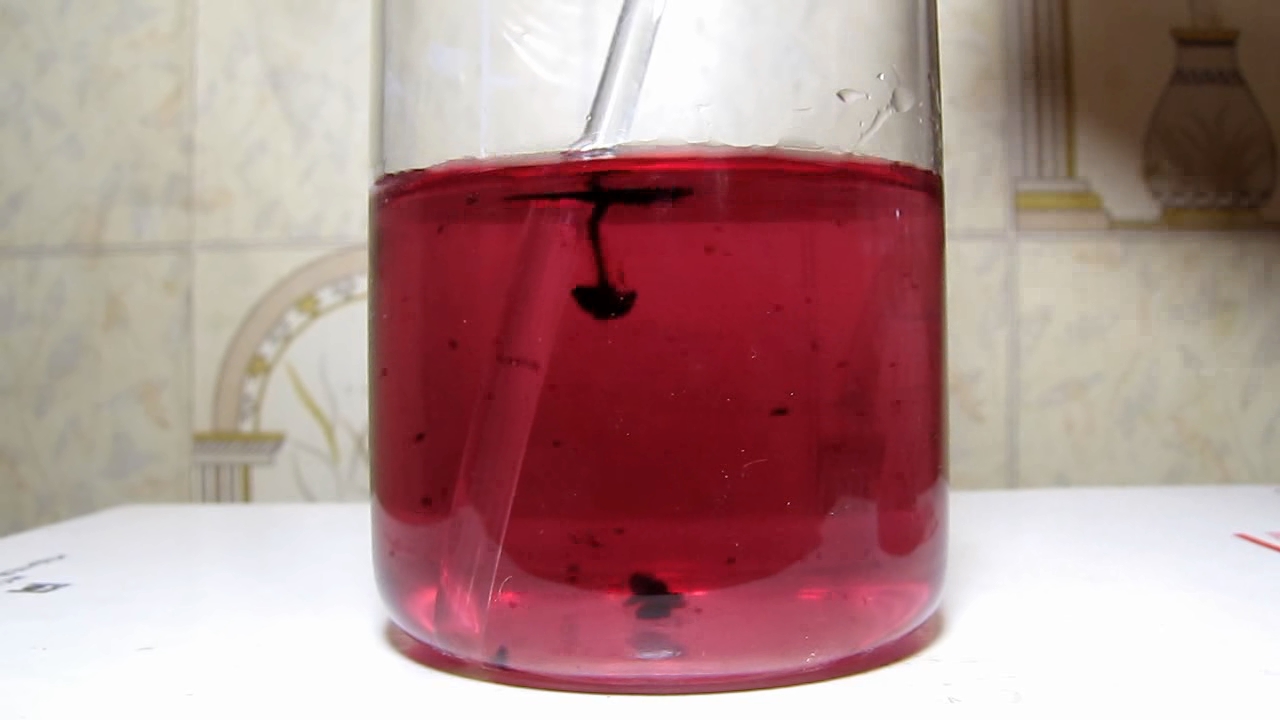
|
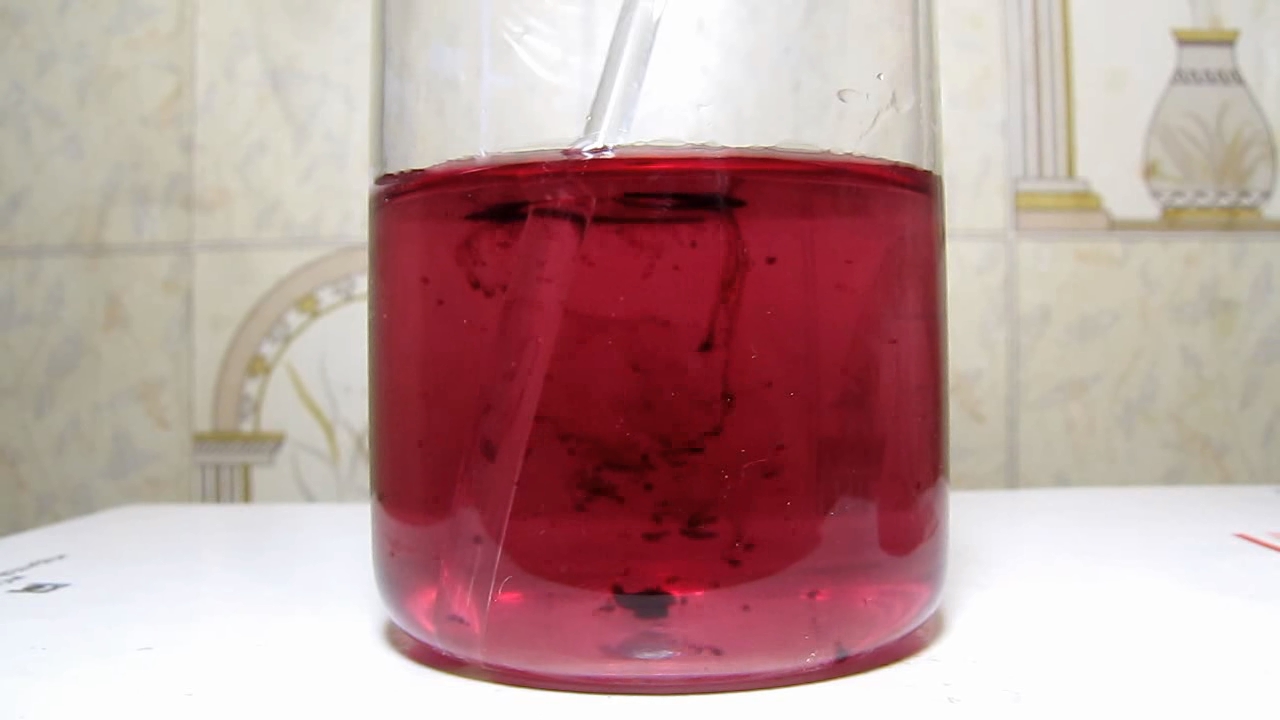
|

|
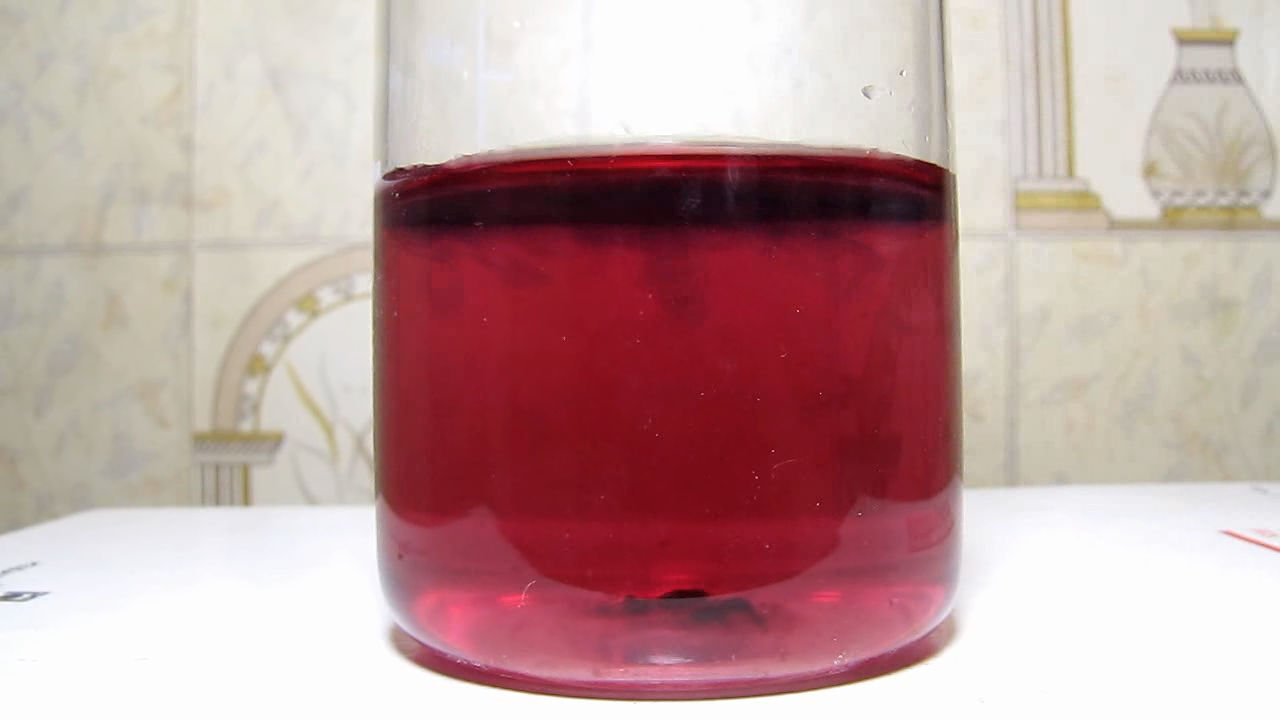
|
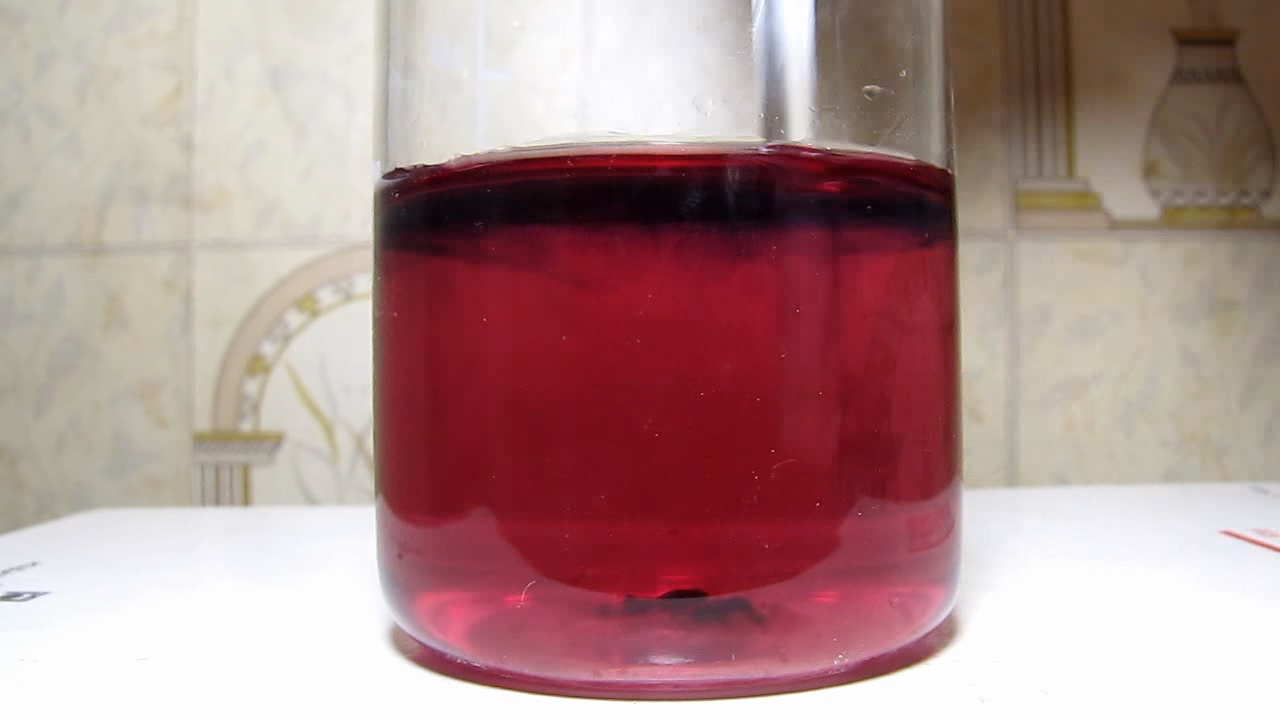
|
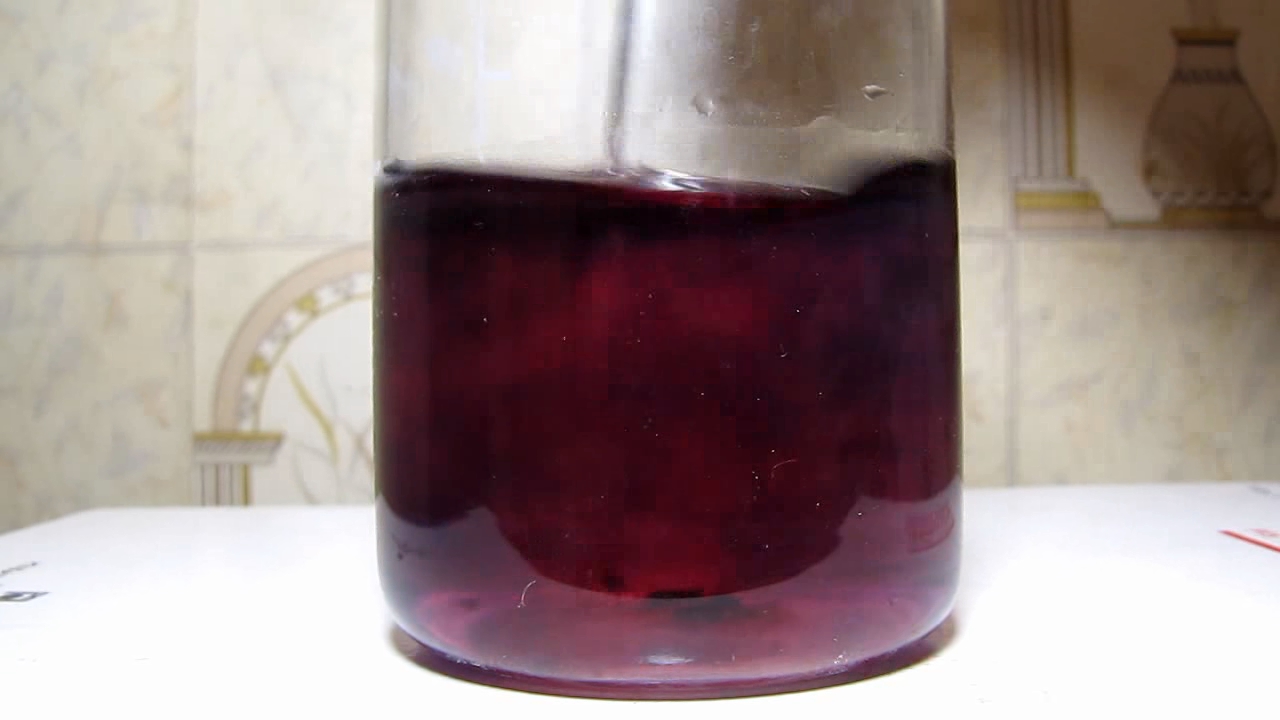
|
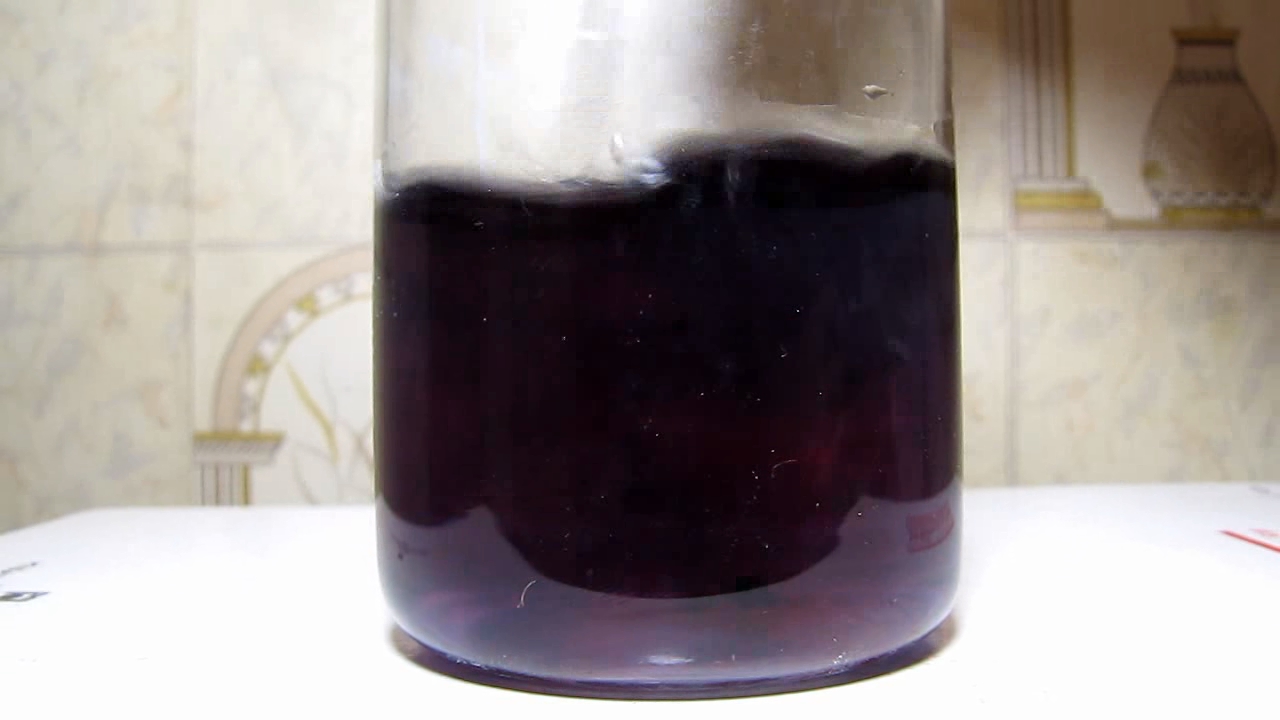
|
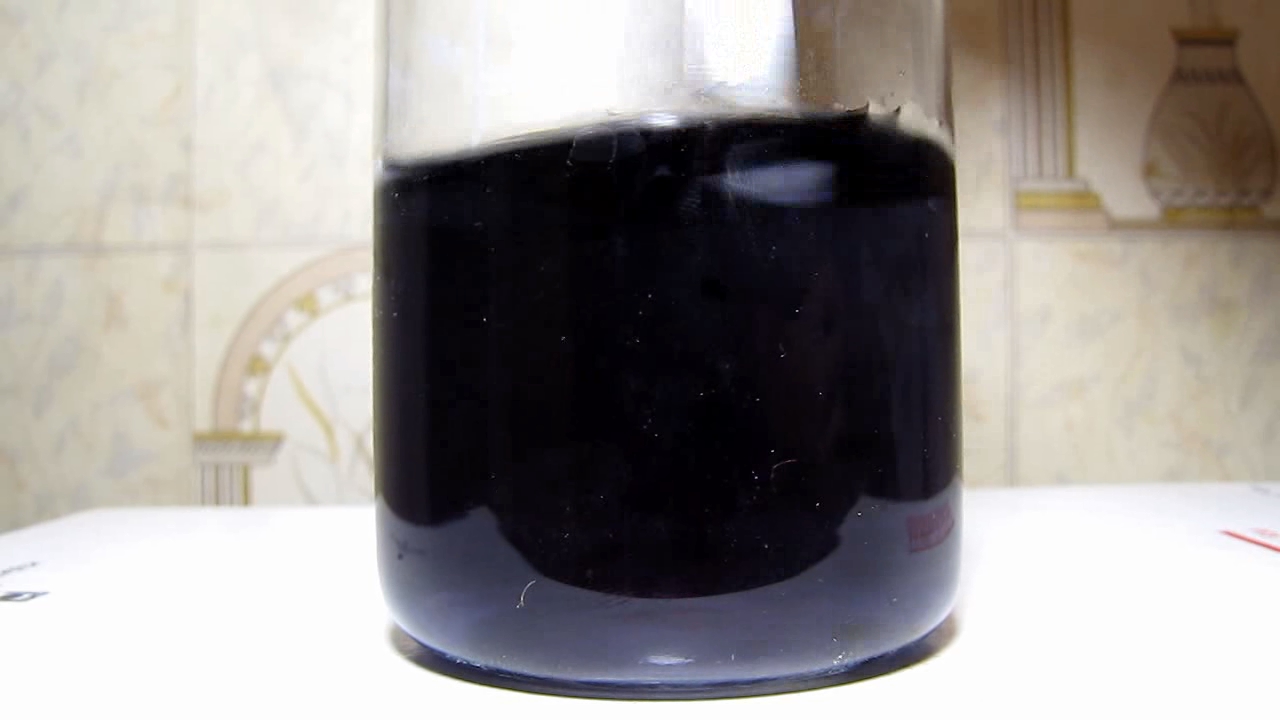
|

|

|

|
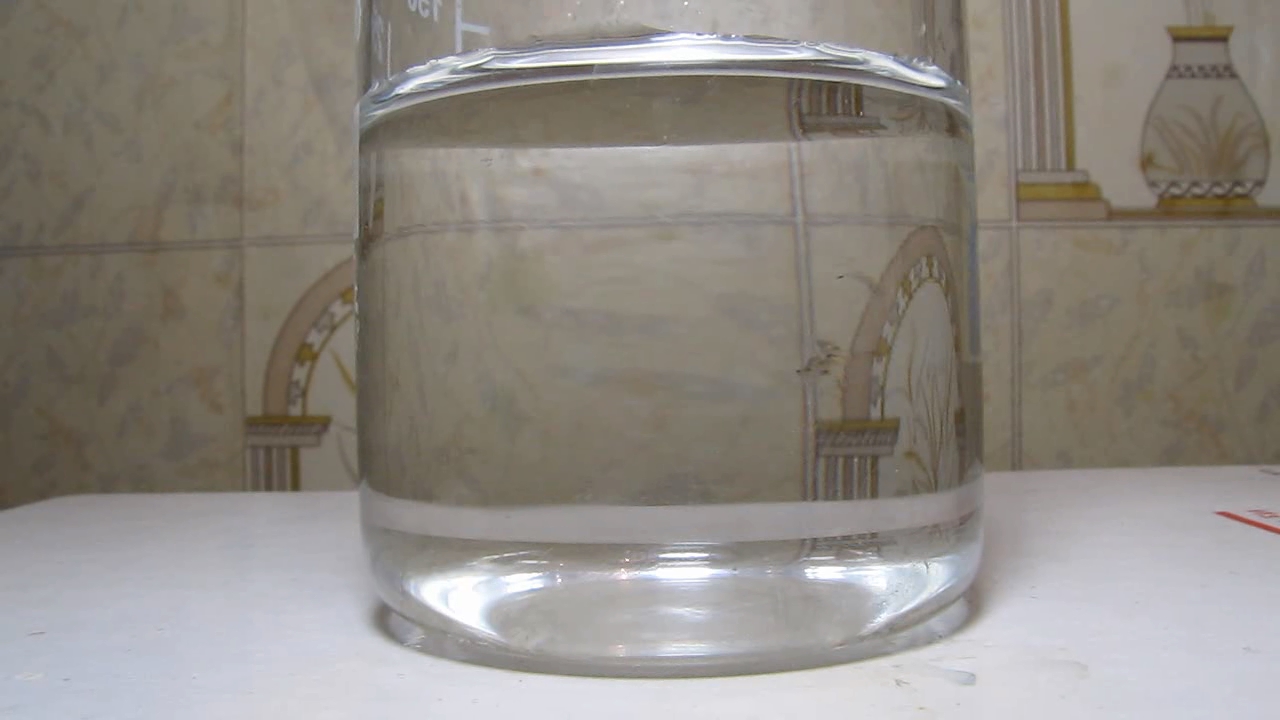
|

|

|
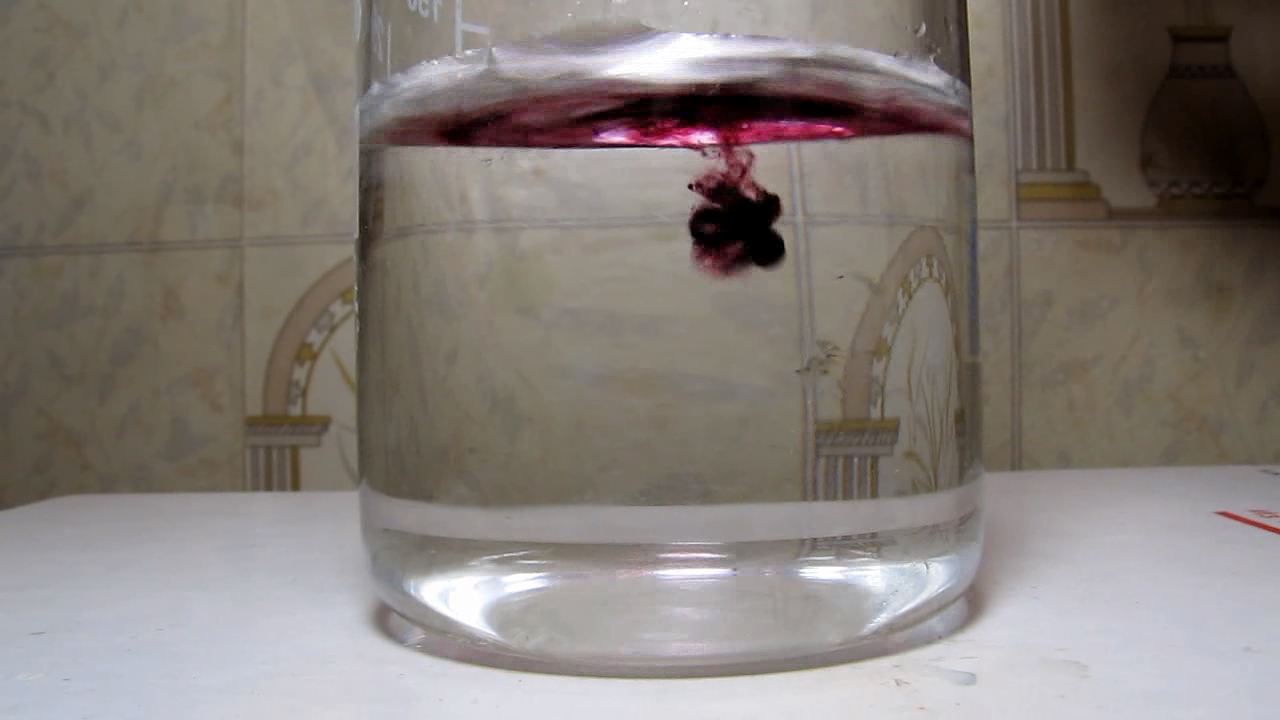
|
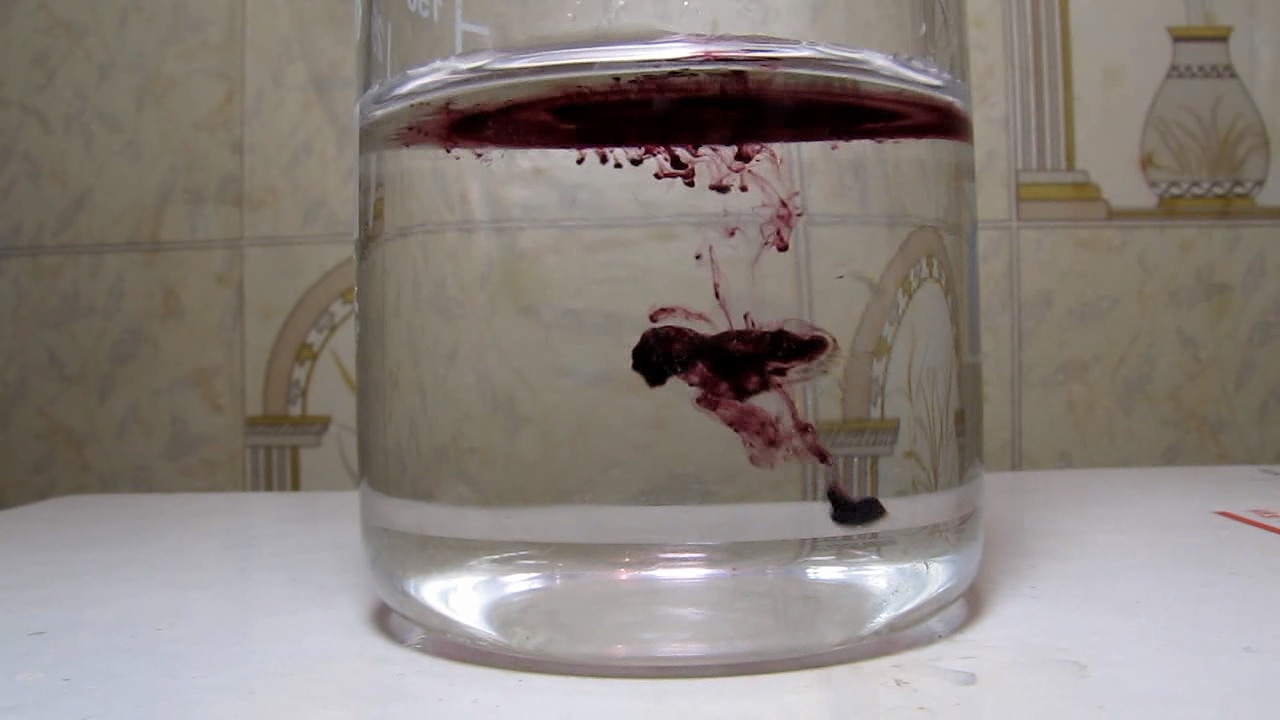
|
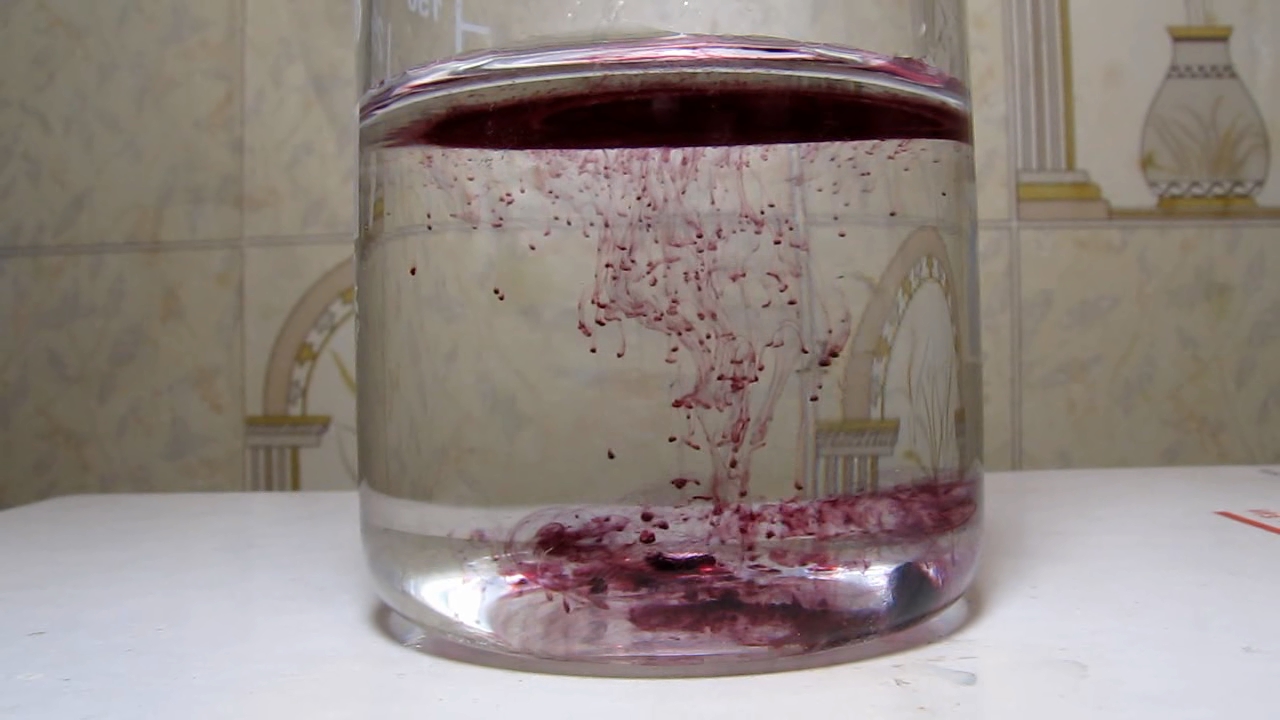
|
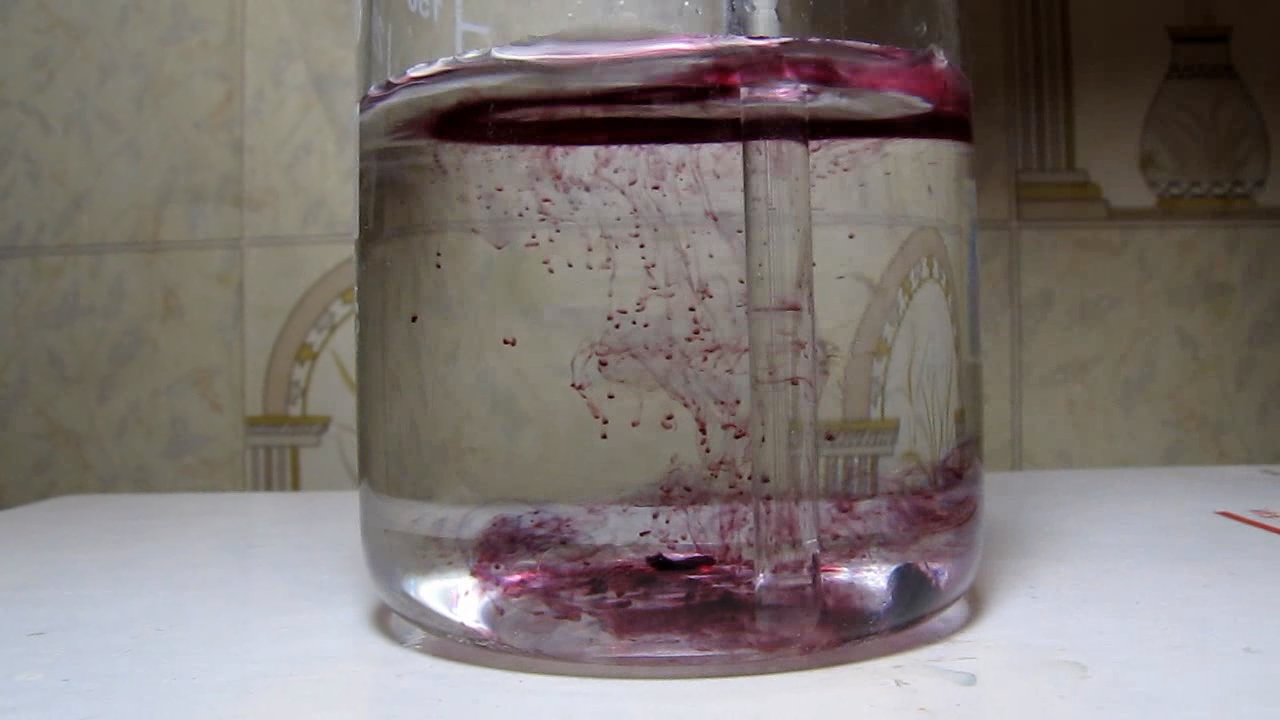
The glass rod was not washed after the previous experiment. A small amount of ammonia remained on its surface. Therefore, the water in the glass became alkaline, so the colour of the plant dye turned lilac/purple, not crimson.
|
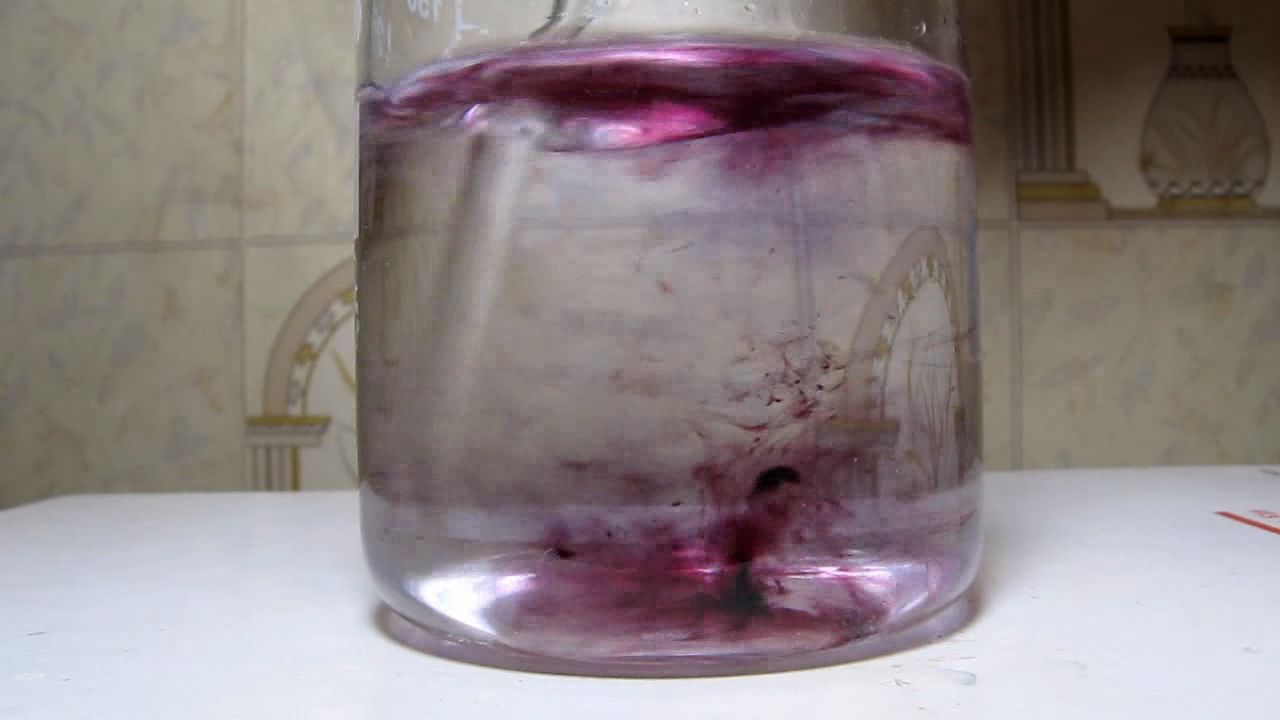
|
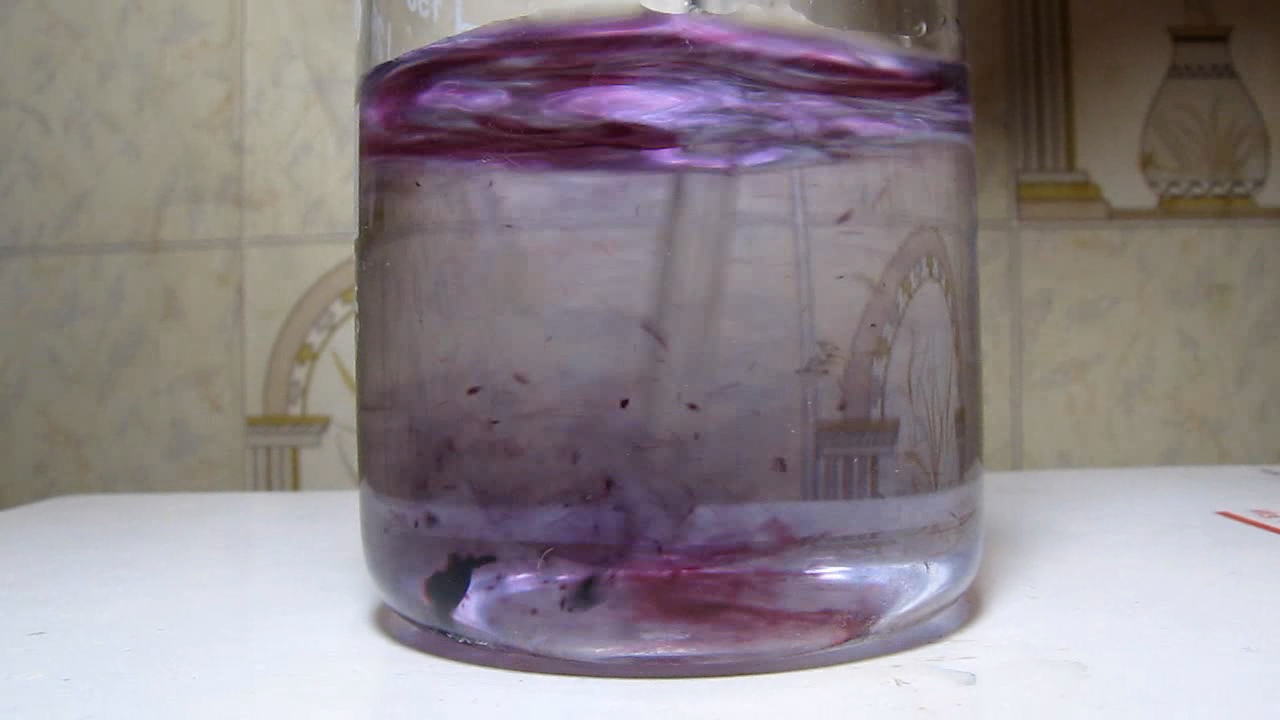
|

|

|
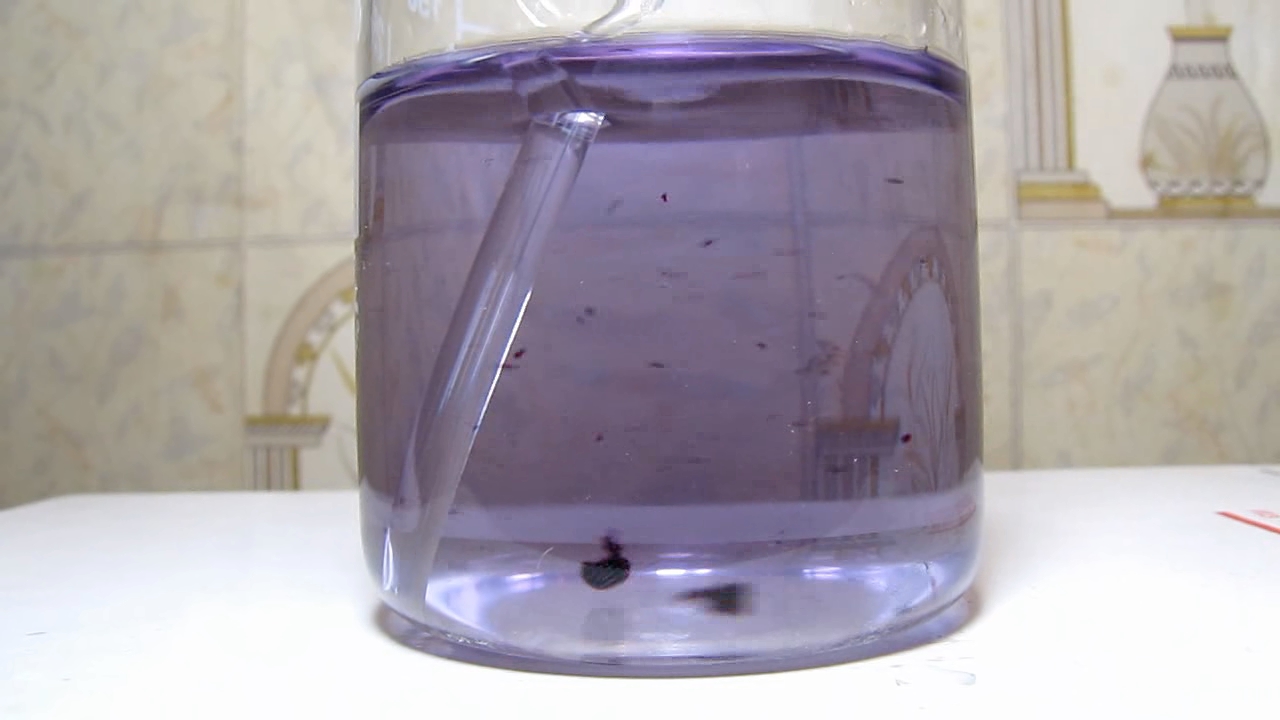
|
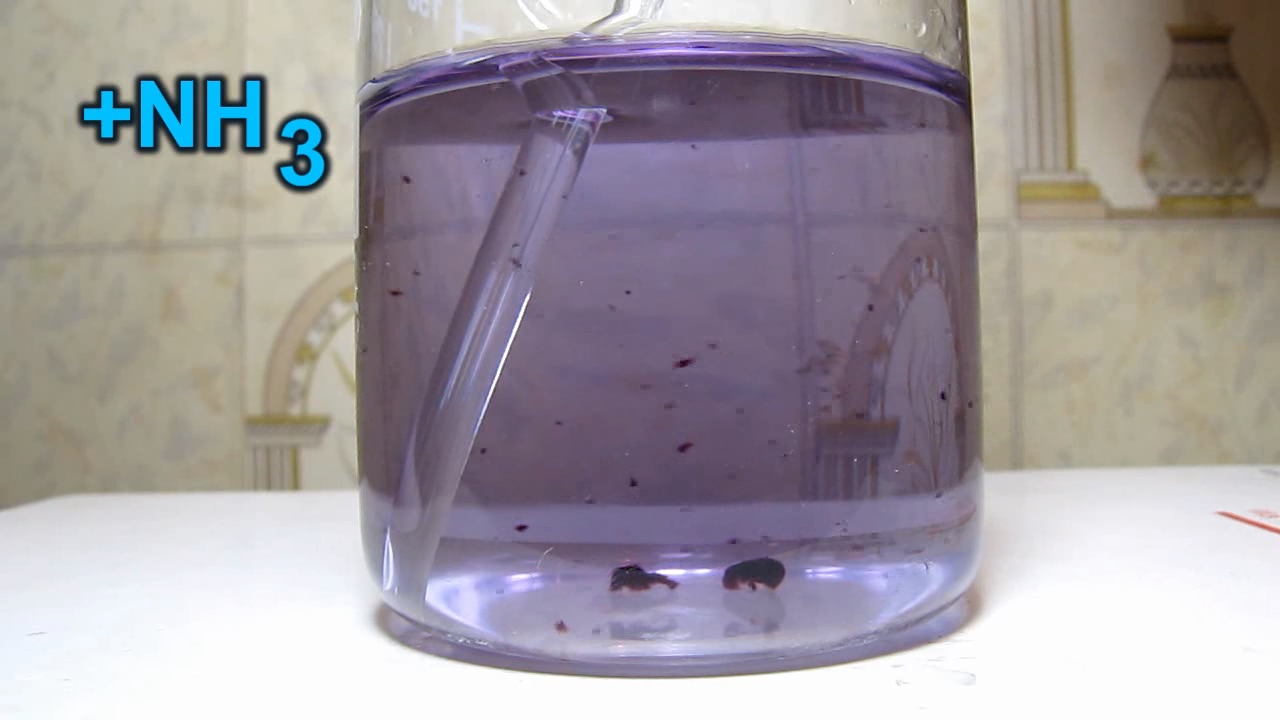
|
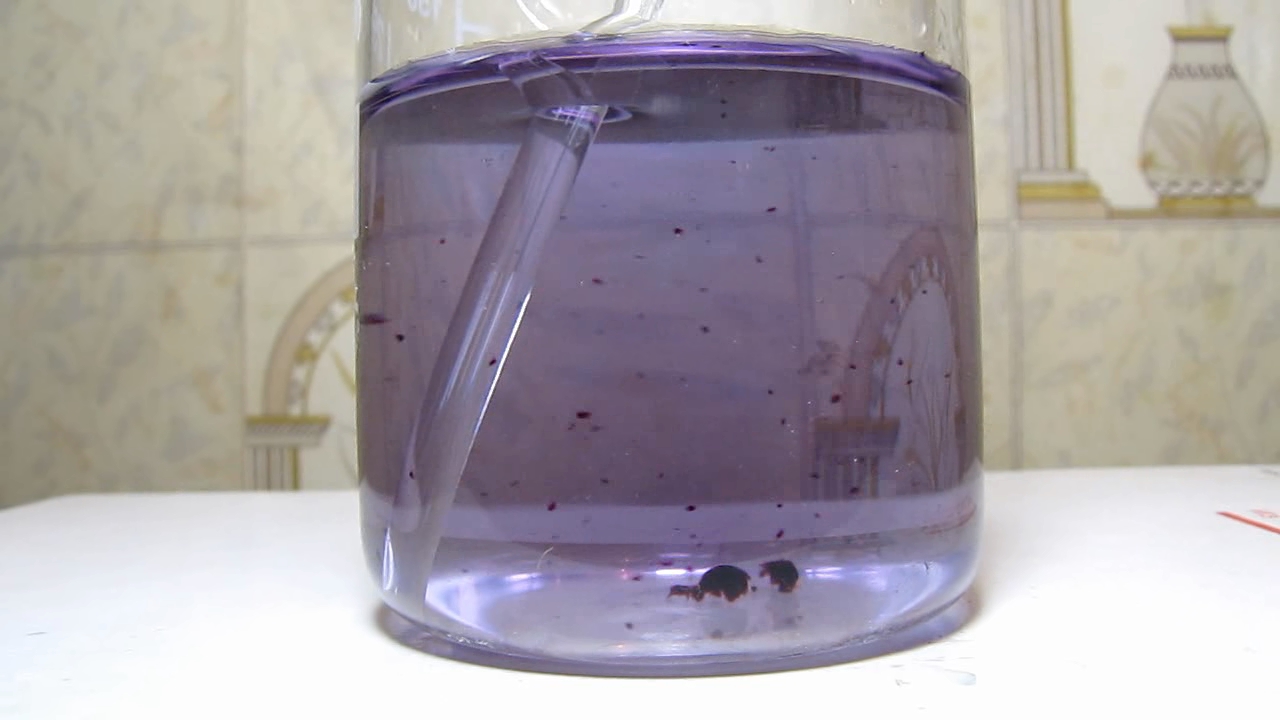
|
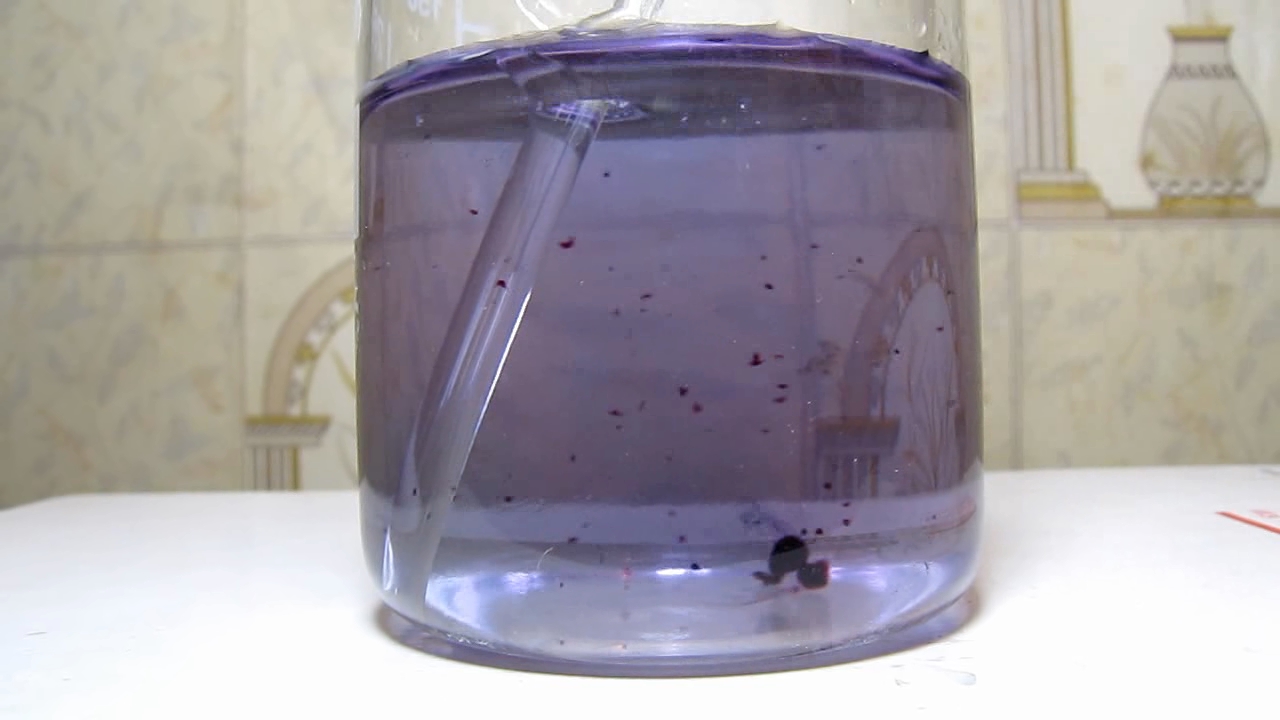
|
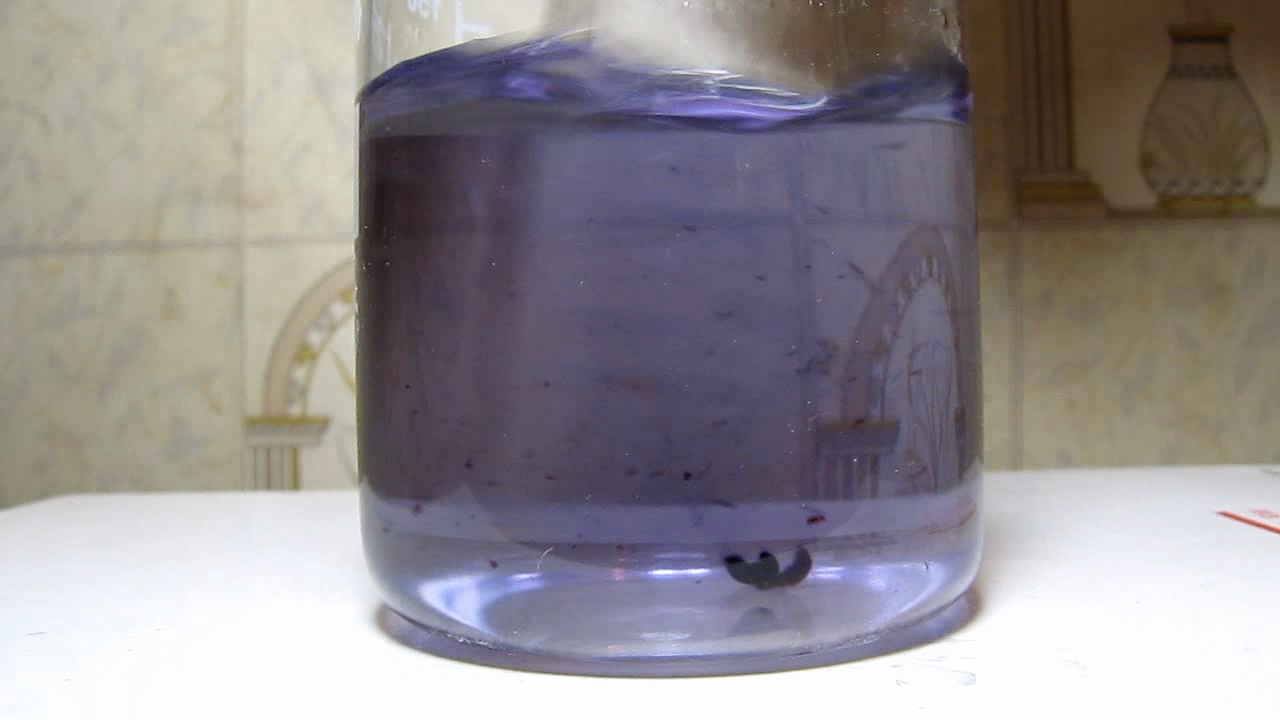
|

|
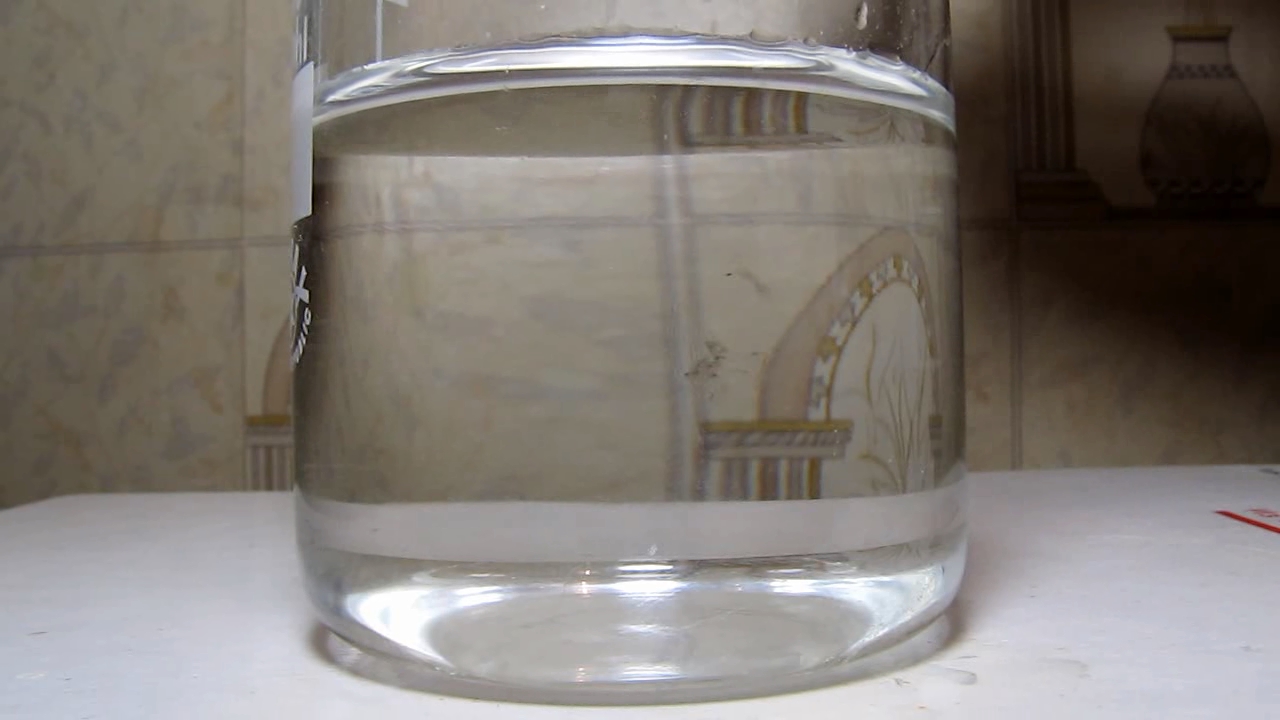
|
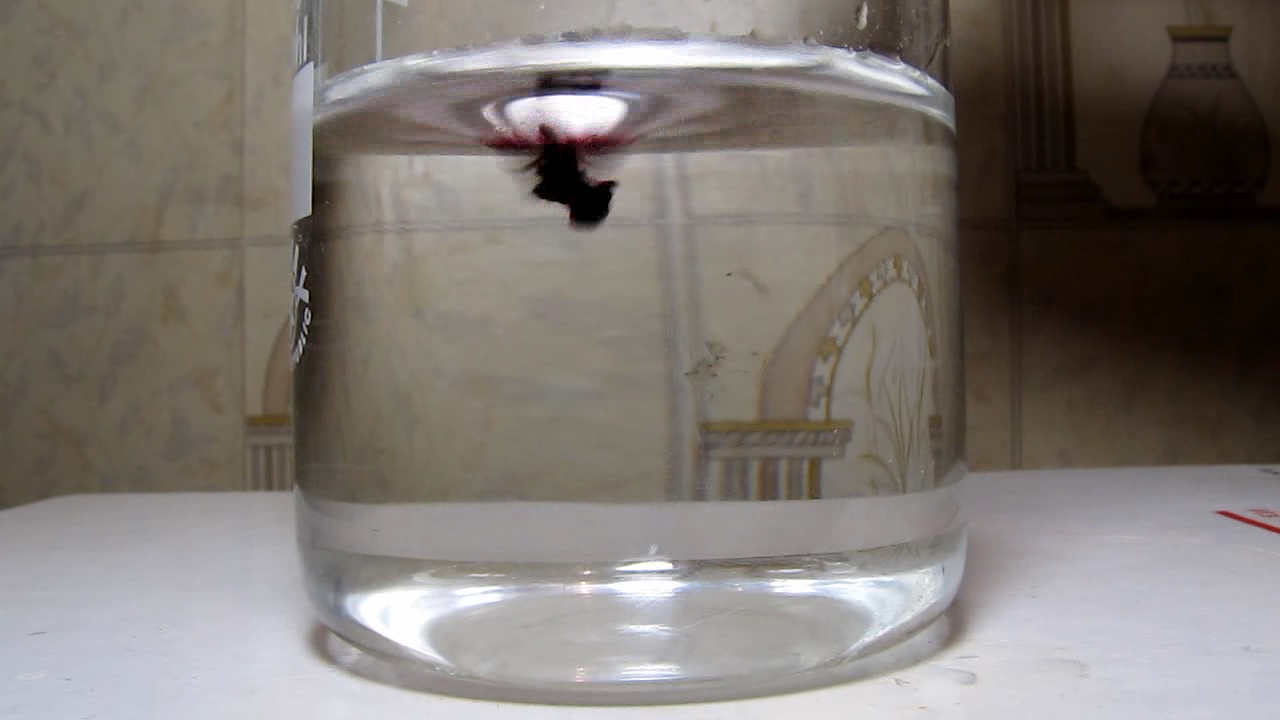
|
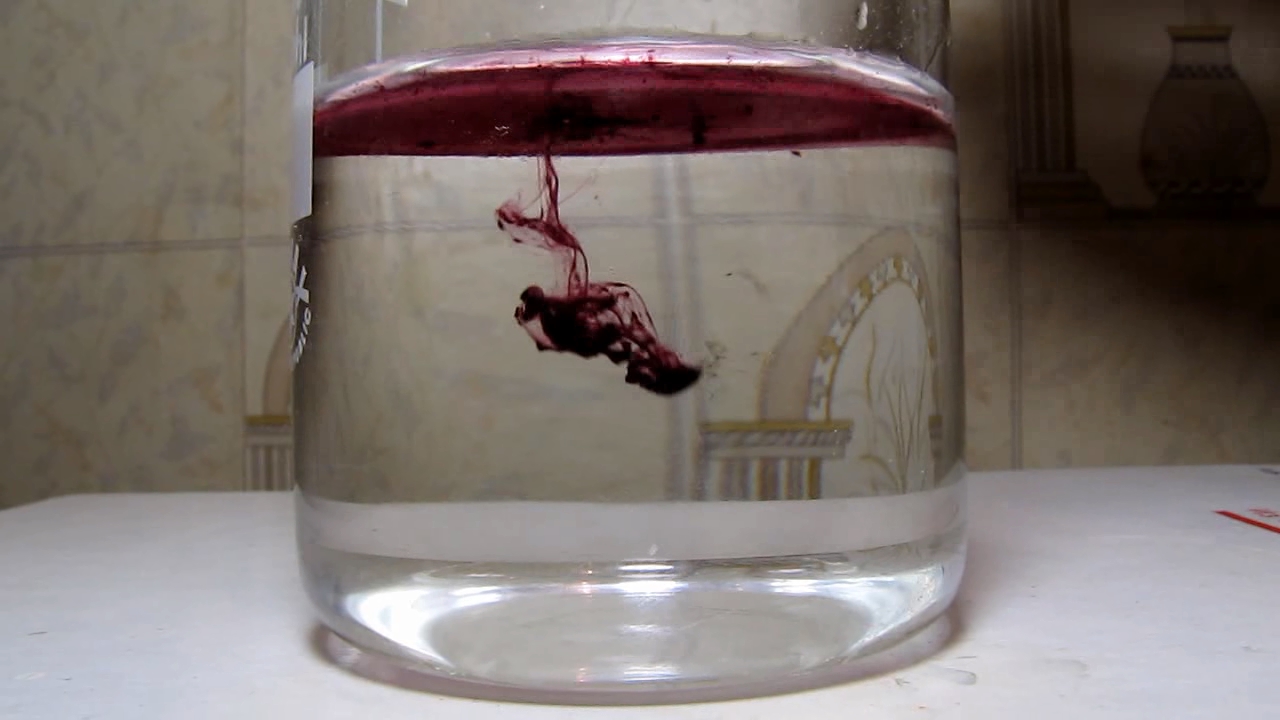
|
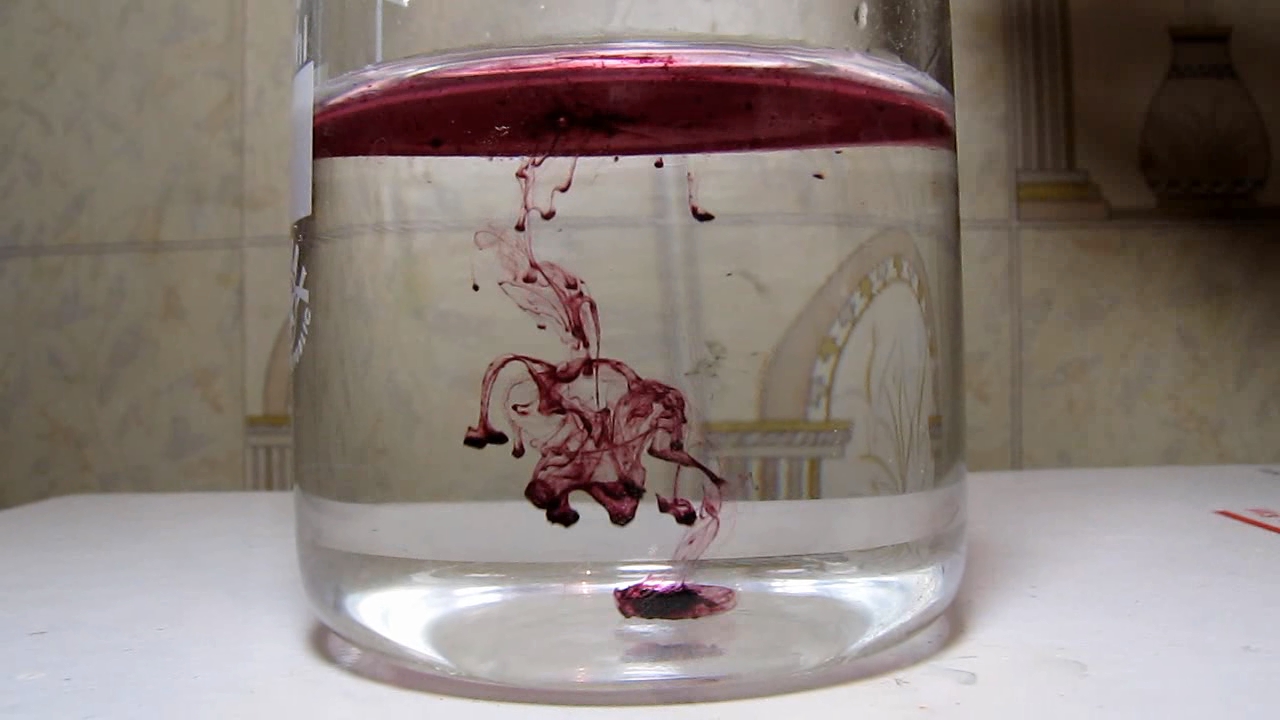
|
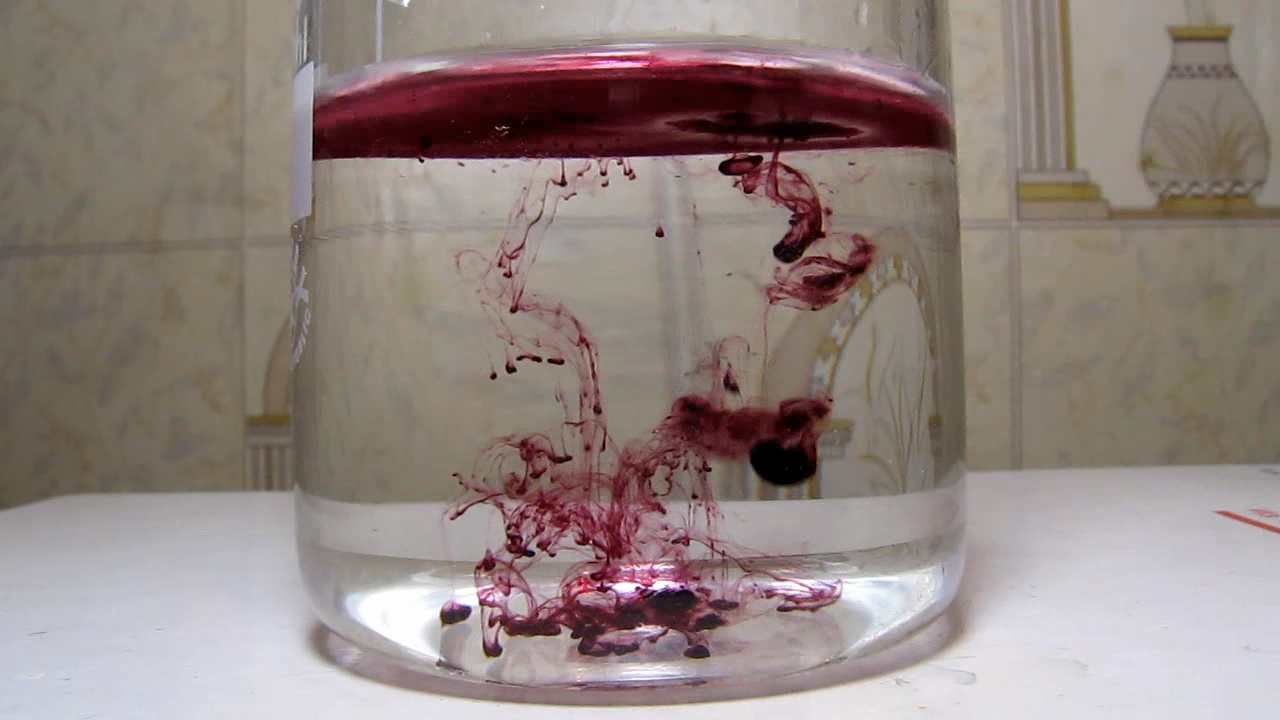
|
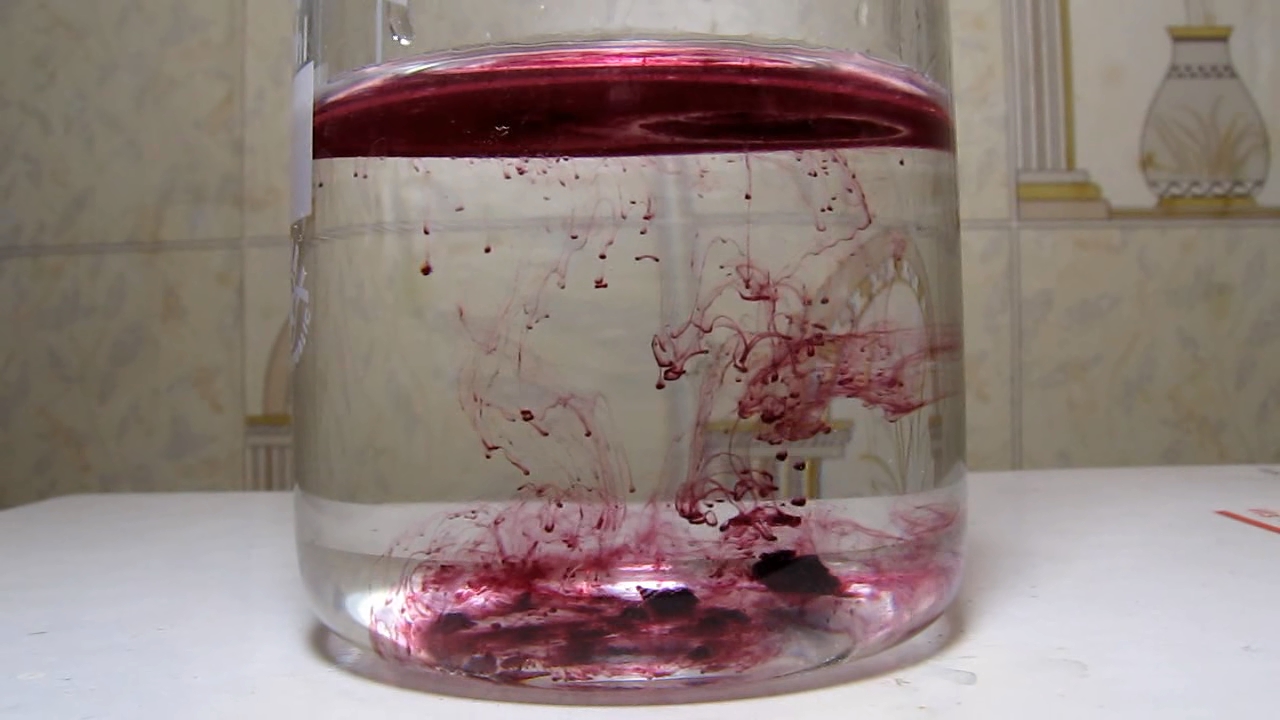
|
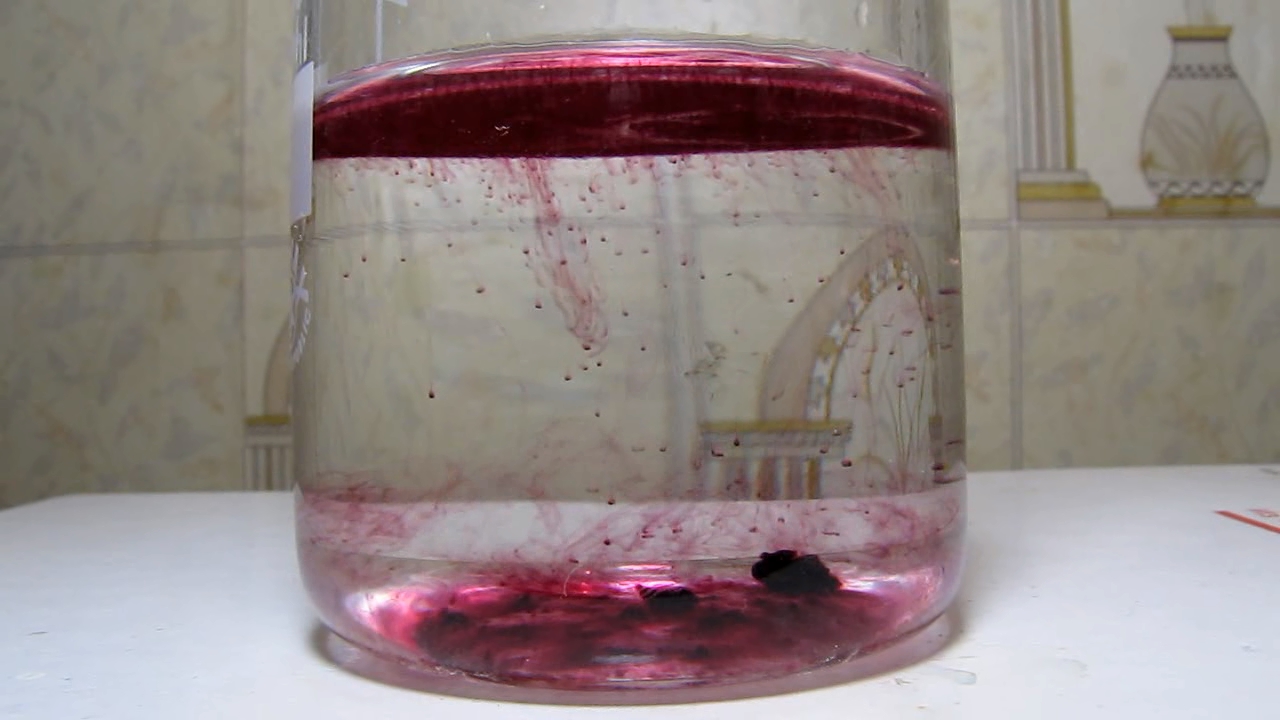
|
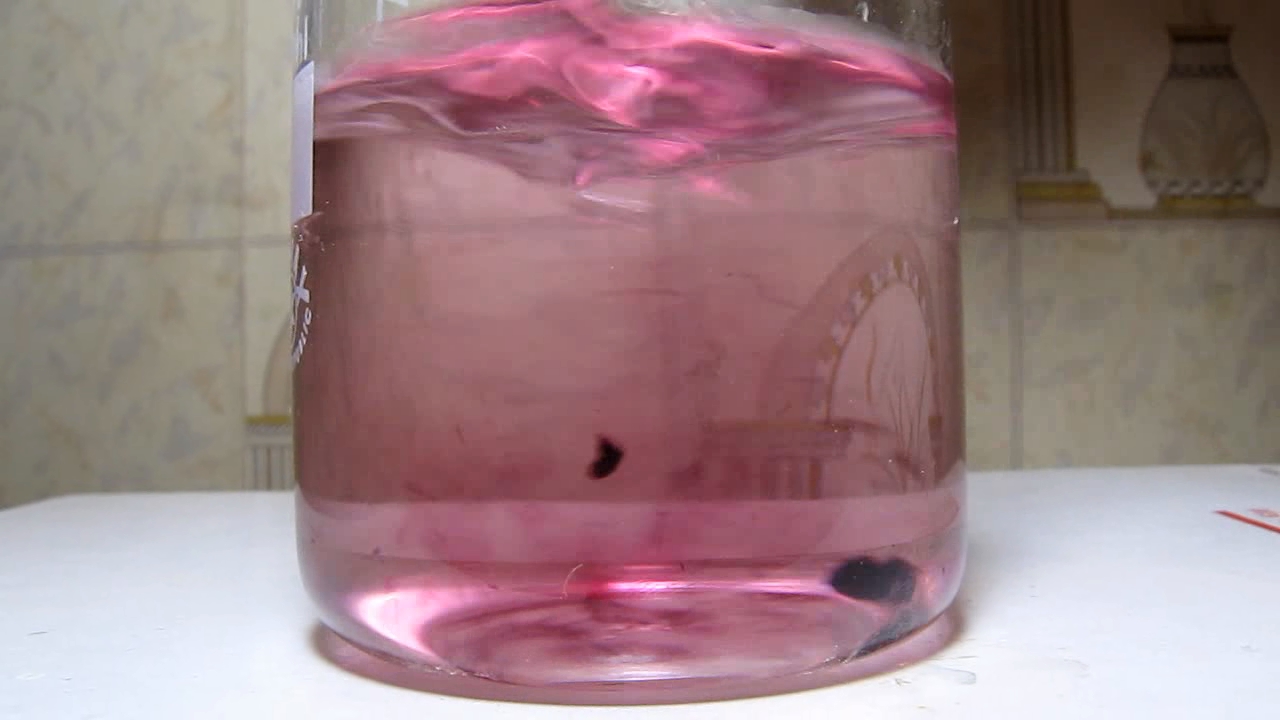
|
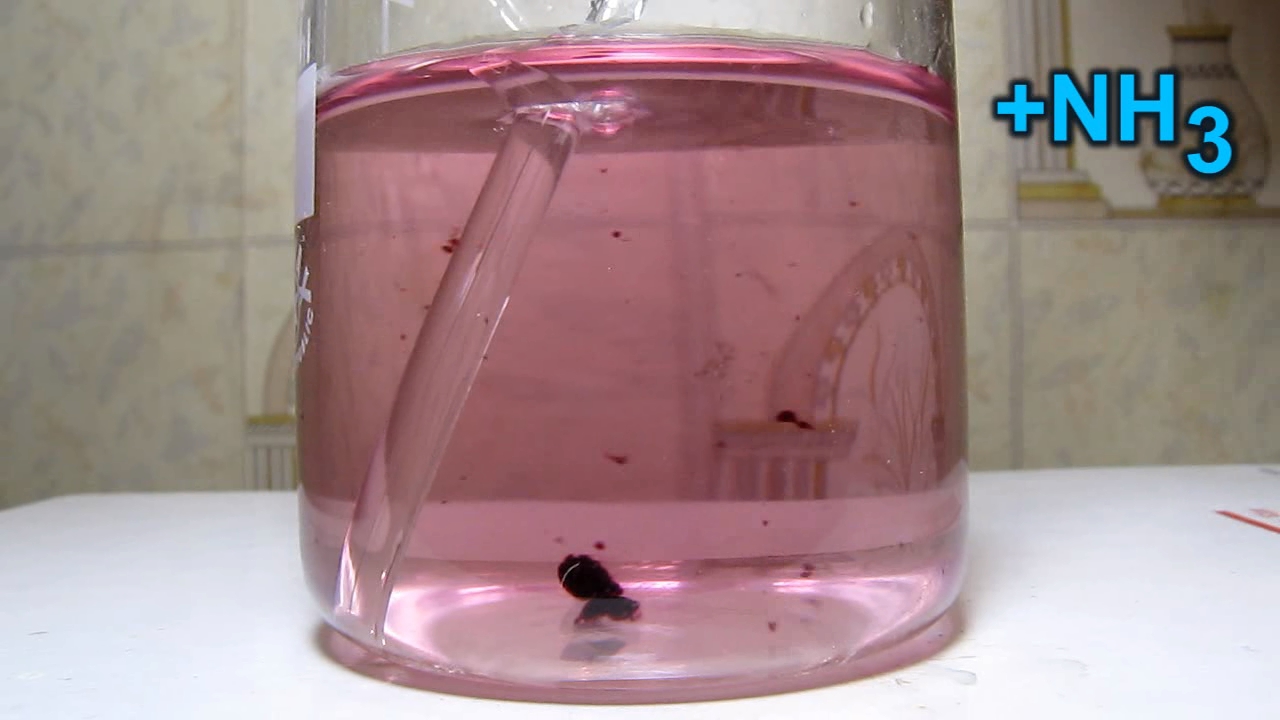
|

|
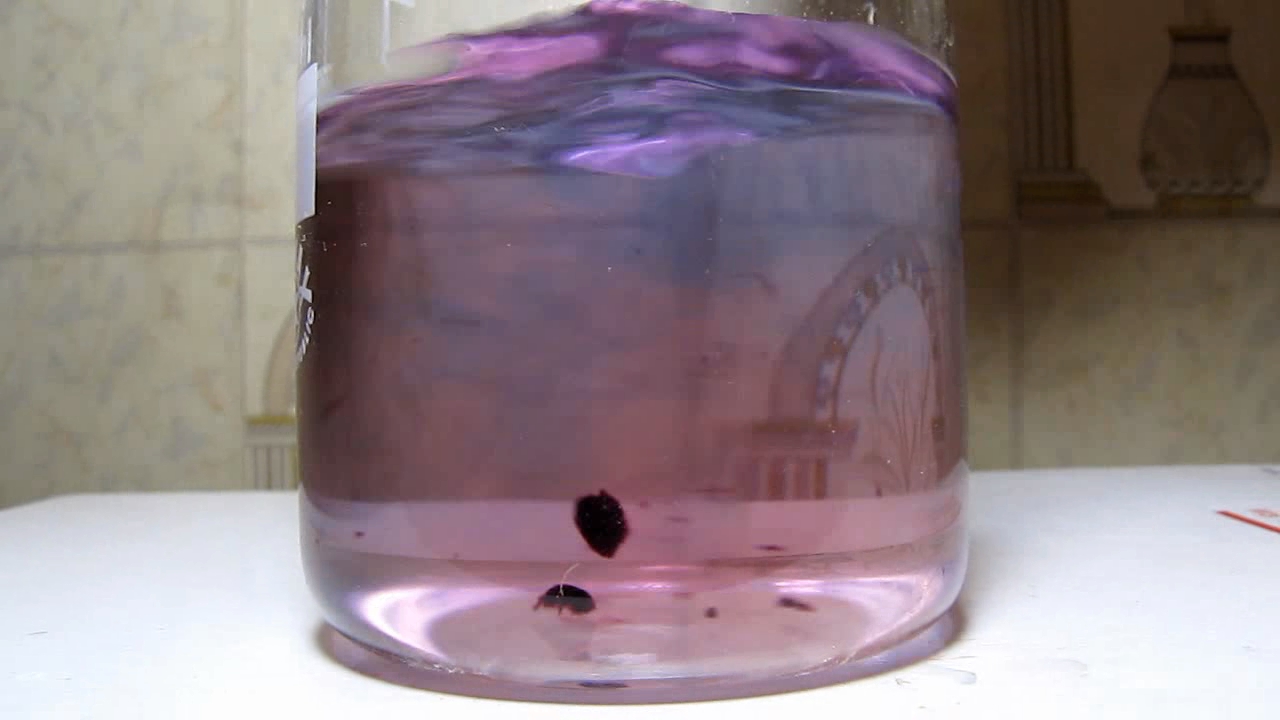
|
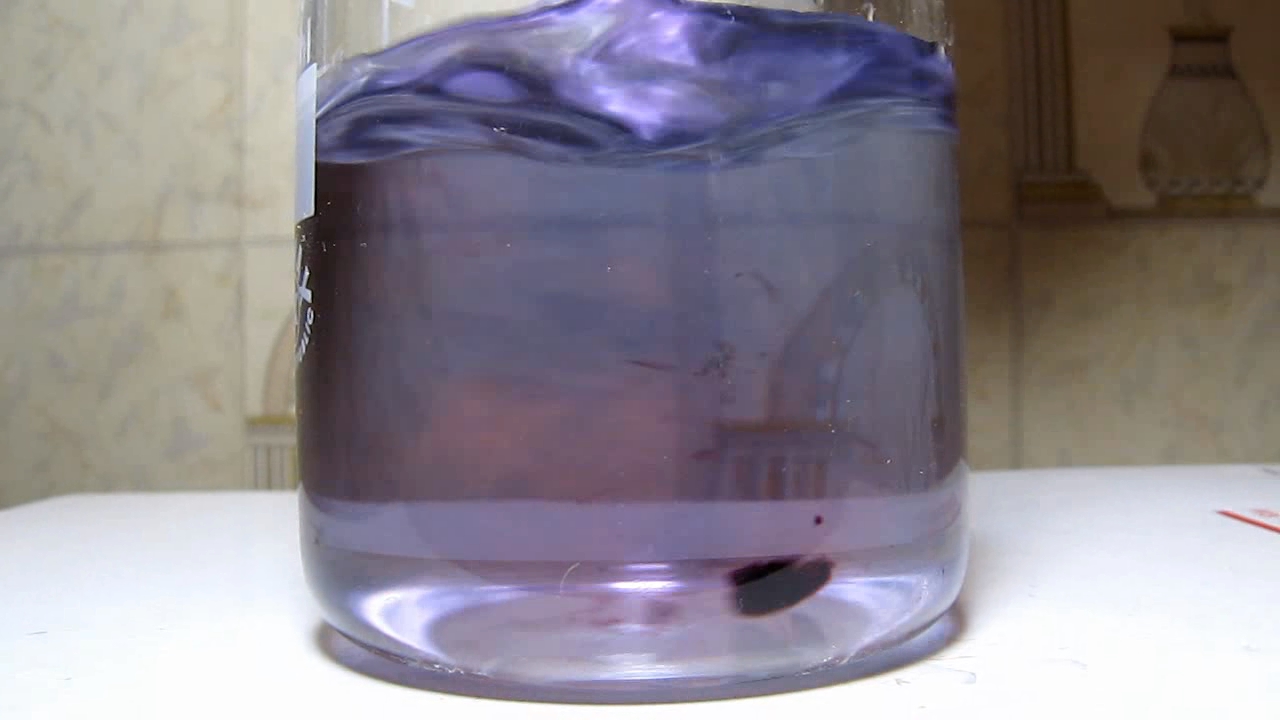
|
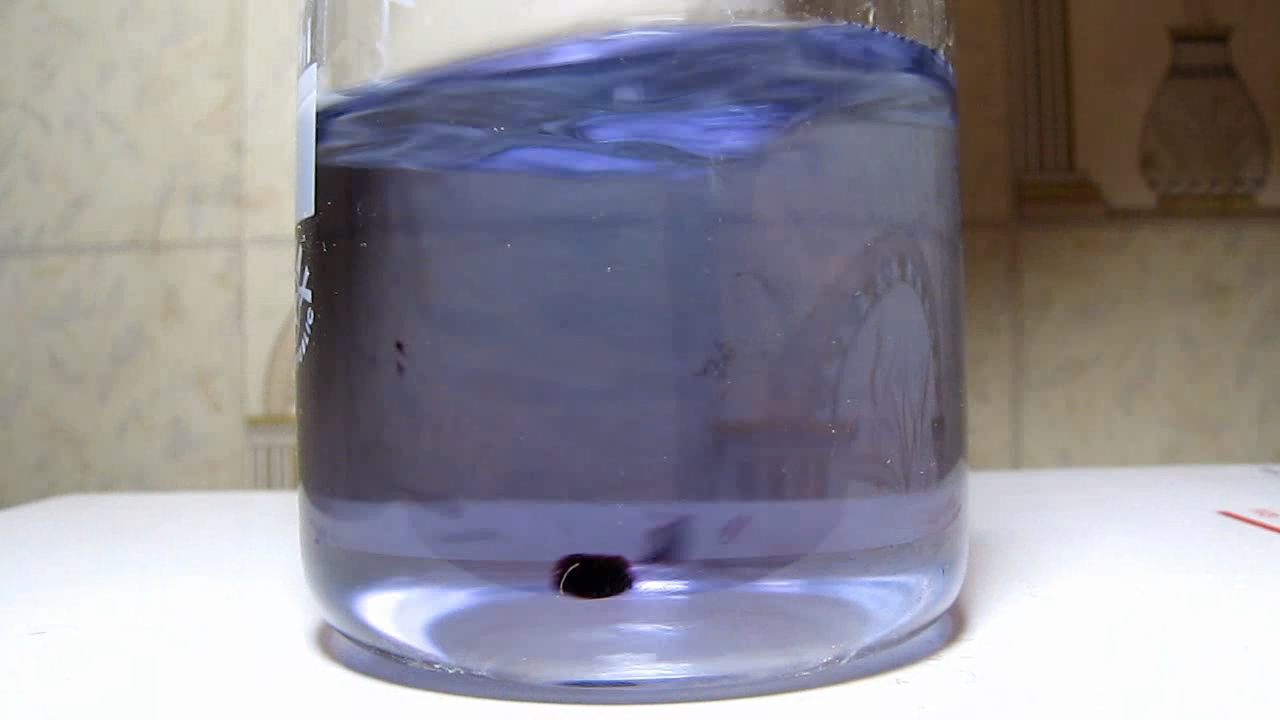
|
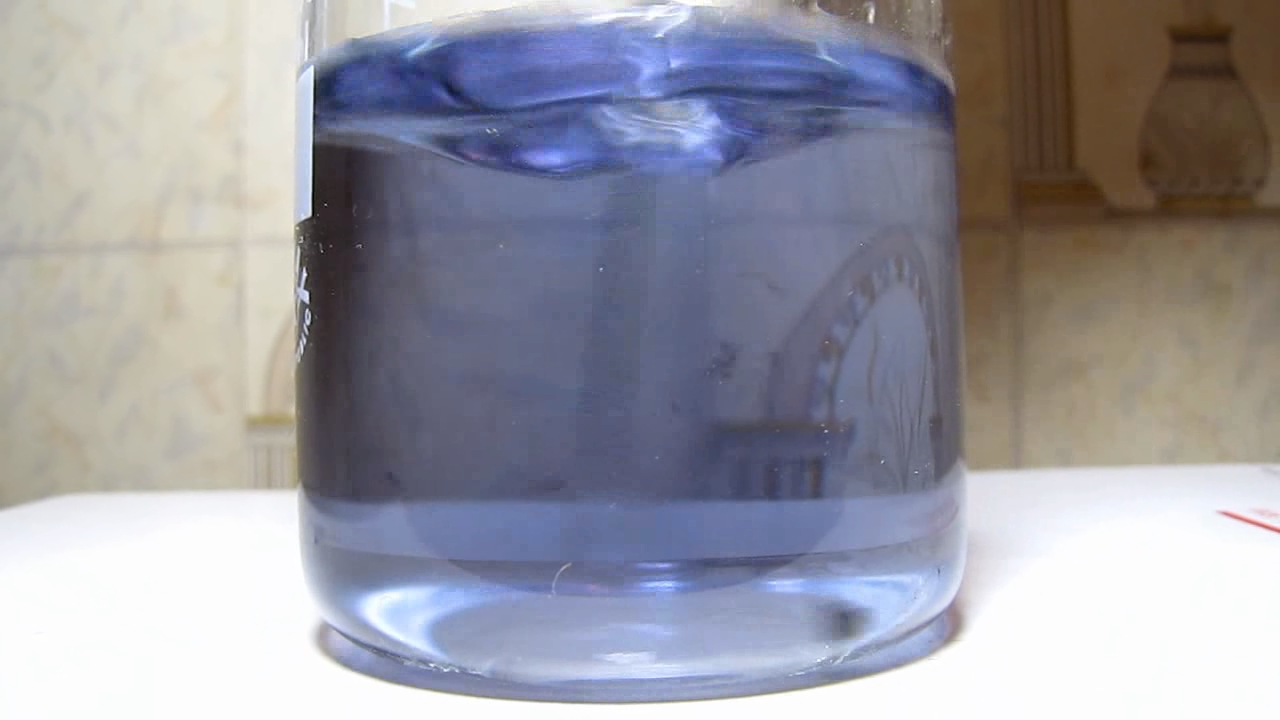
|
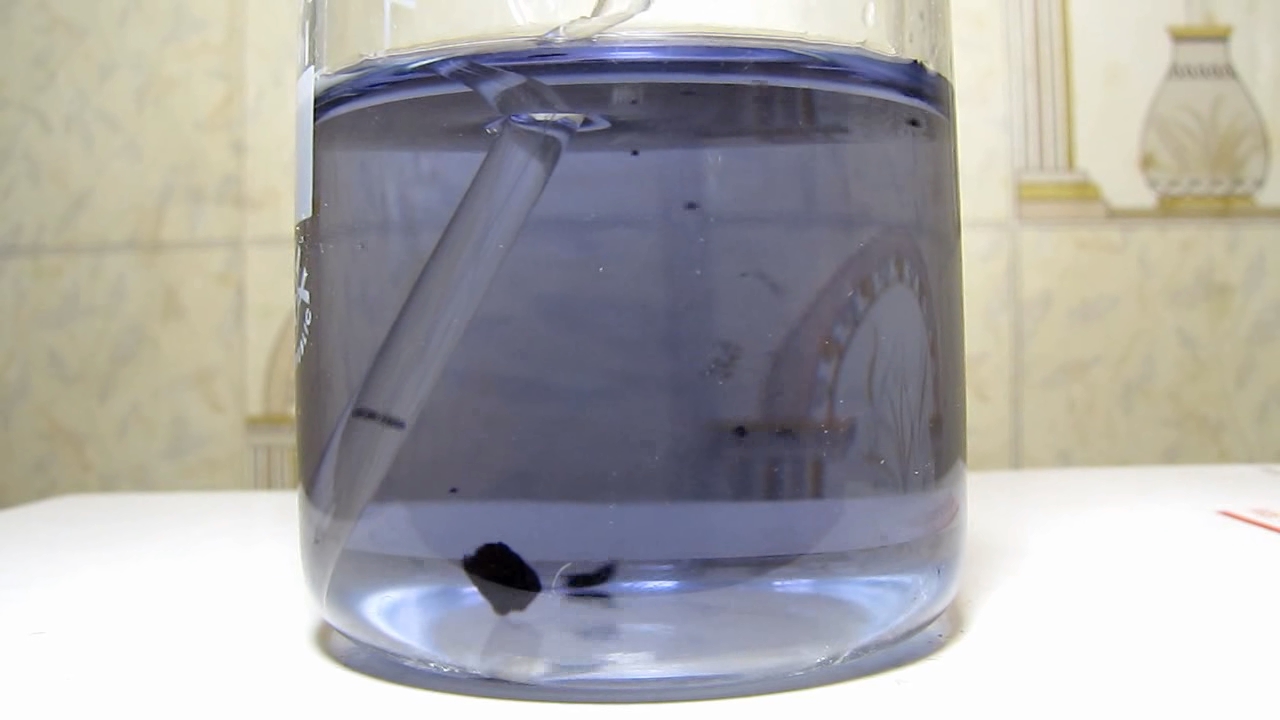
|
|
The colour change described above reminded me of complexometric titration. A popular indicator in this method is Eriochrome Black T. The indicator's colour in a buffer solution (pH ~ 10) is blue, and when this compound forms a complex with metal cations (for example, Ca2+, Mg2+, Zn2+), the colour turns pink/crimson. In particular, complexometric titration with Eriochrome black T is used to determine water hardness. At first, an ammonia buffer solution and Eriochrome black T are added to the water sample; the solution turns crimson because complexes of the indicator with calcium and magnesium formed. A solution of EDTA (ethylenediaminetetraacetate) is added from the burette. EDTA forms a stable complexes with cations of di- and polyvalent metals in water. When all the metal cations have reacted, EDTA displaces the indicator from its complexes with the metals. The uncomplexed indicator is blue (this is the "free" Eriochrome Black T that is not bonded to metal ions). Therefore, the red colour of the solution turns blue. In practice, the titration is stopped when the solution turns purple [2].

Eriochrome Black T __________________________________________________ 2 The analyzed solution is named an analyte. The solution used for titration is called a titrant (for example, EDTA). Eriochrome Black T is one of the metallochromic (or complexometric) indicators. These indicators are applied for complexometric titrations of metals. |
|
Описанное выше изменение цвета напомнило мне комплексонометрическое титрование. Популярный в данном методе индикатор - Эриохром черный Т (Eriochrome Black T). Цвет индикатора в буферном растворе (рН ~ 10) - синий, а когда данное вещество образует комплекс с катионами металлов (например, Ca2+, Mg2+, Zn2+), цвет становится розовым/малиновым. В частности, комплексонометрическое титрование с Эриохромом черным Т применяют для определения жесткости воды. К пробе воды добавляют аммиачный буферный раствор и Эриохромом черный Т, раствор окрашивается в малиновый цвет, т.к. образуются комплексы индикатора с кальцием и магнием. Из бюретки добавляют раствор ЭДТА (этилендиаминтетраацетат) - данное вещество образует устойчивые комплексы с катионами двух- и поливалентных металлов в воде. Когда все катионы металлов прореагируют, ЭДТА вытесняет индикатор из его комплексов с металлами. Несвязанный в комплекс индикатор синий. Поэтому красный цвет раствора переходит в синий. На практике титрование прекращают, когда раствор становится сиреневым [2].

Eriochrome Black T __________________________________________________ 2 Анализируемый раствор называется аналитом. Раствор, используемый для титрования, называется титрантом (например, ЭДТА). Эриохром черный Т - один из металлохромных (или комплексонометрических) индикаторов. Данные индикаторы применяются для комплексонометрического титрования металлов. |
1  2
2
 3
3
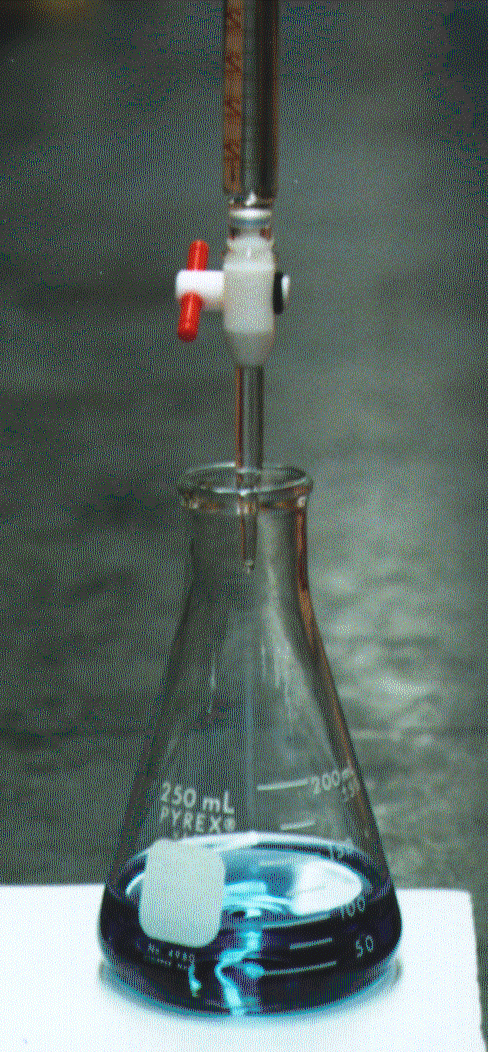
The titration of hardness with EDTA using Eriochrome Black T as an indicator. Wine red colour: the indicator is bound to metal ions (before the end point of the titration).
Purple colour: this is the end point (blue + red). Blue colour: the indicator is not bound to metal ions (after the end point of the titration). |
|
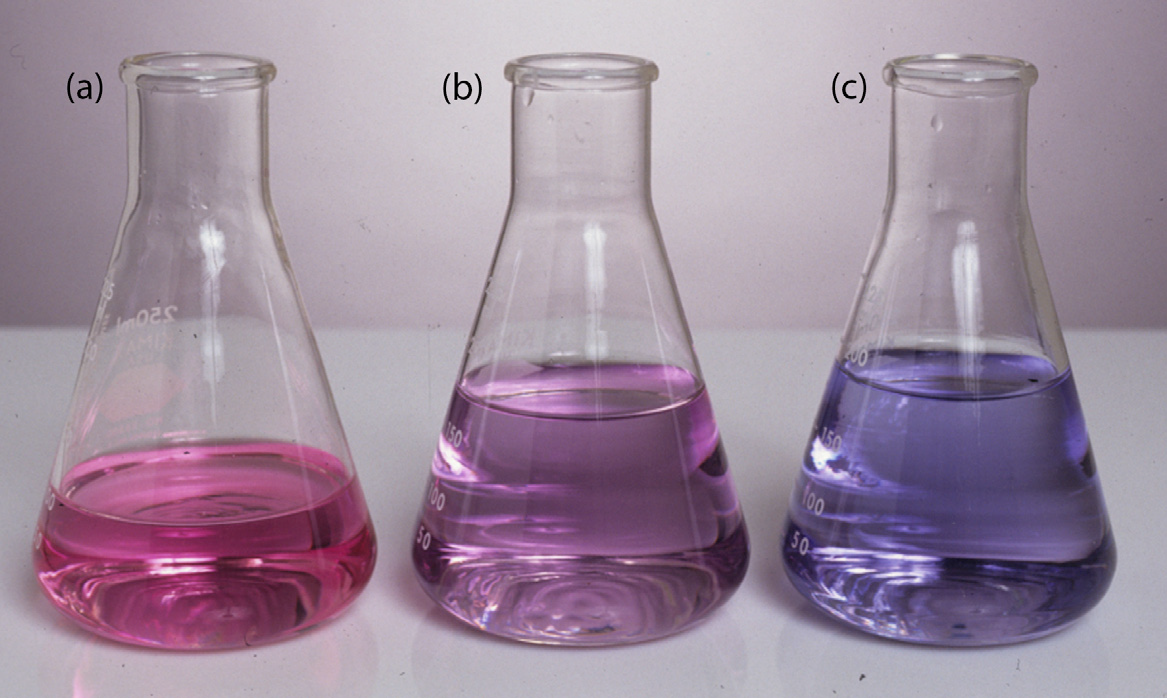
The titration of hardness with EDTA using calmagite as an indicator. The colour changes for Eriochrome Black T and Calmagite are similar. The structures of these two complexometric indicators are almost, but not exactly, the same.
photo from https://chem.libretexts.org/Ancillary_Materials/Demos_Techniques_and_Experiments/General_Lab_Techniques/Titration/Complexation_Titration |
|